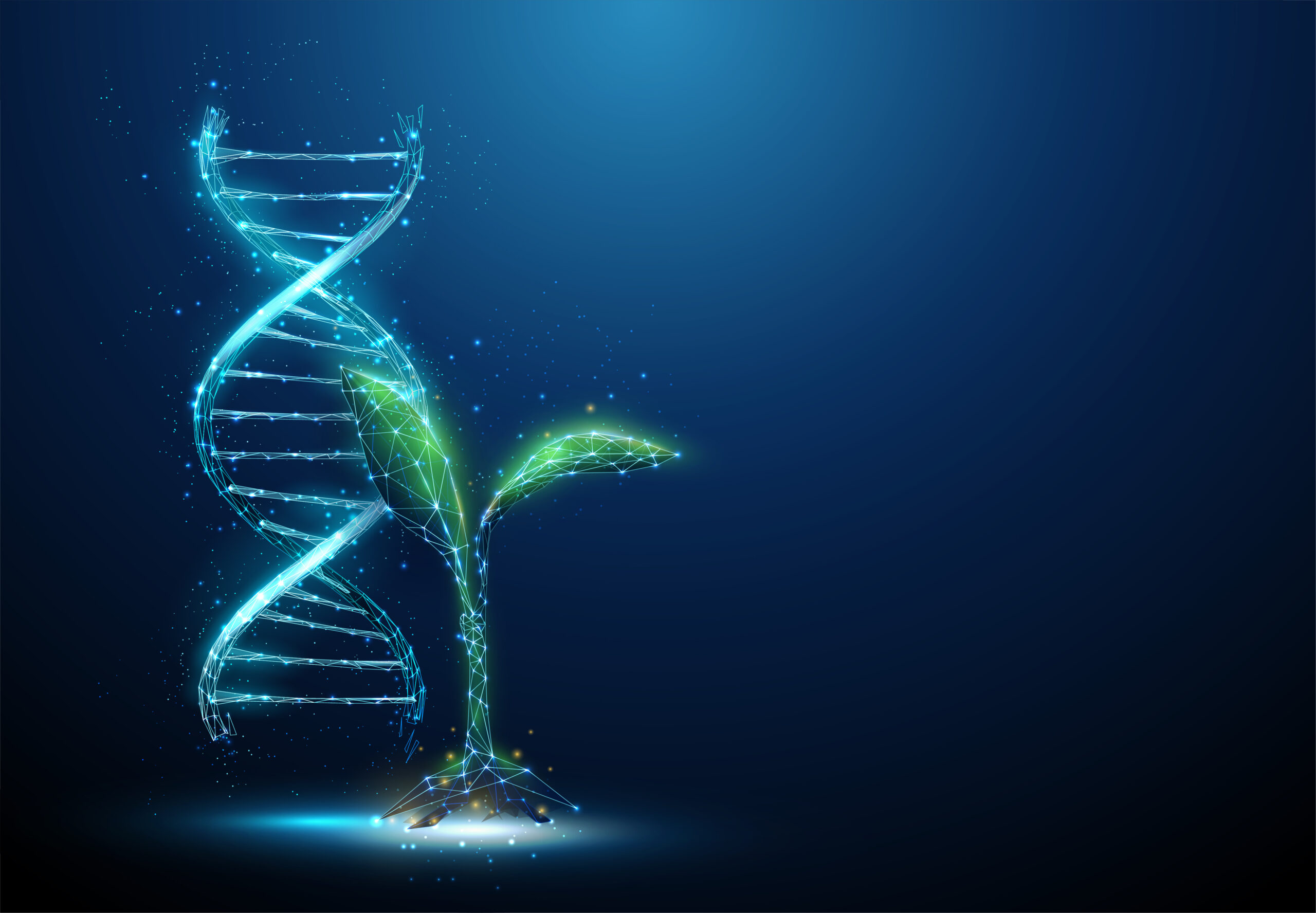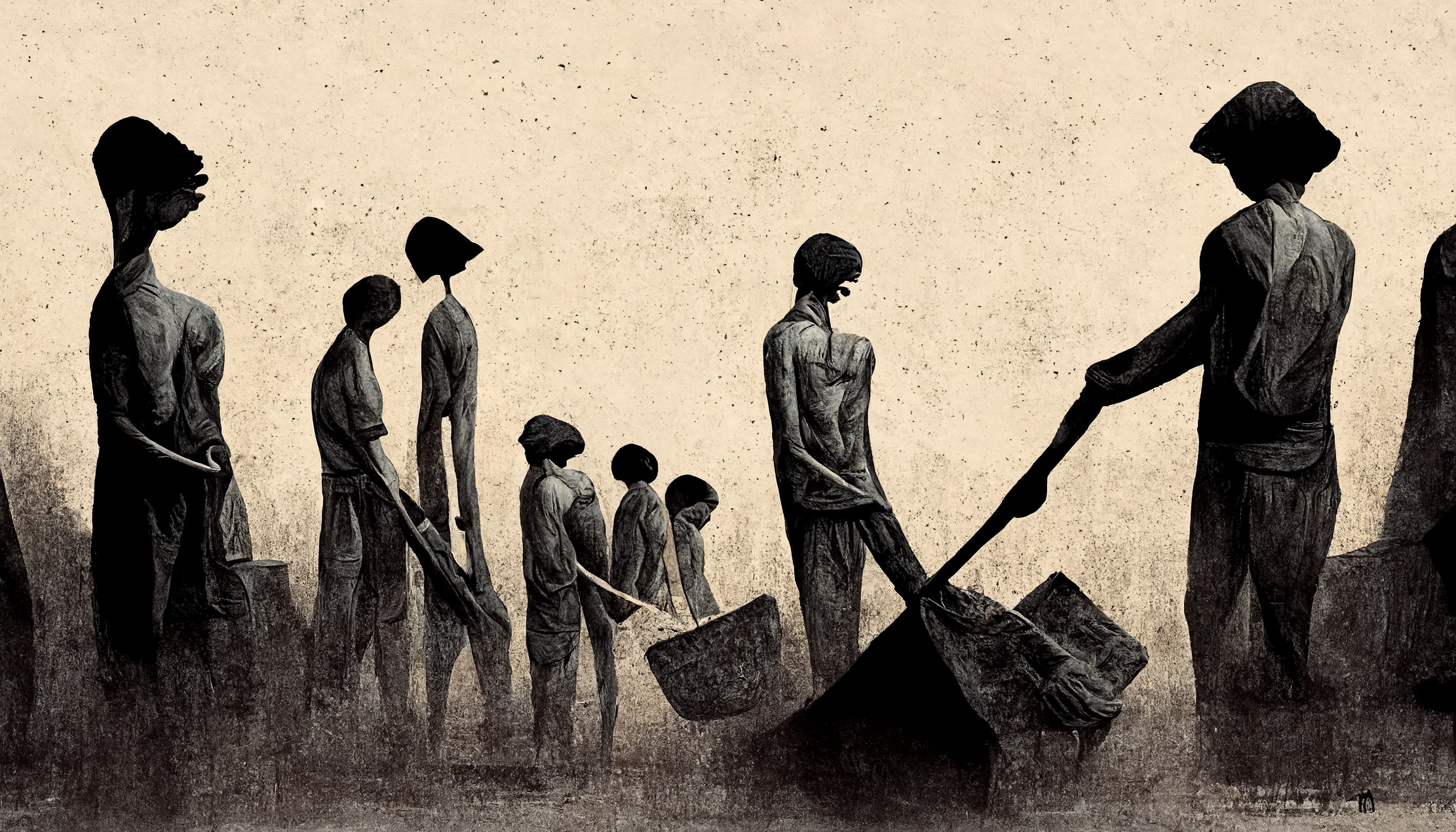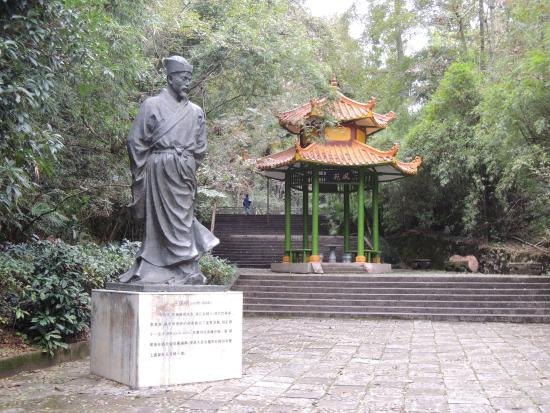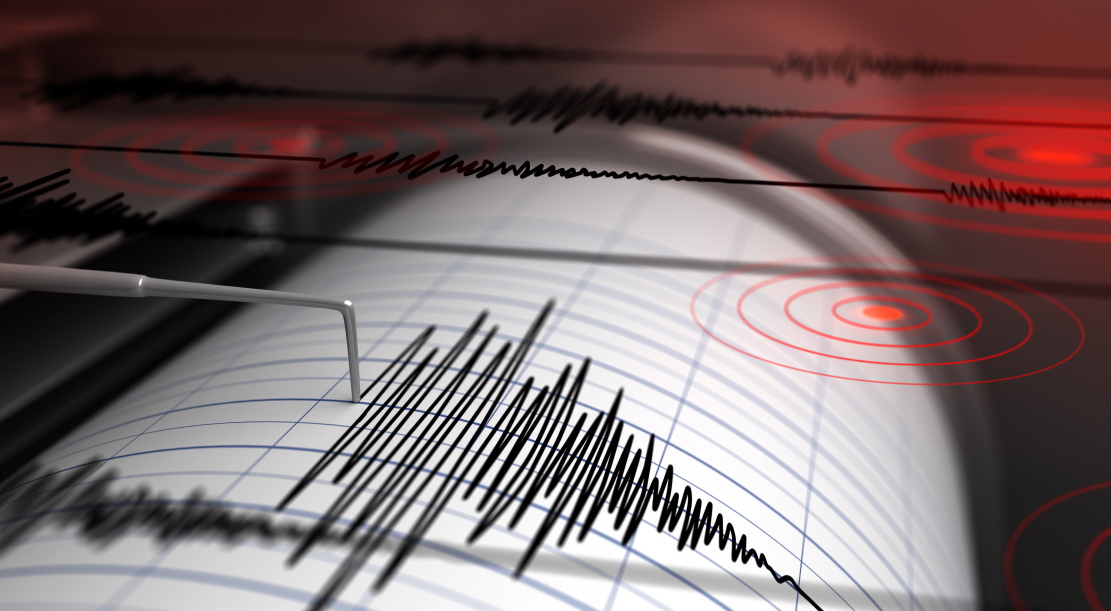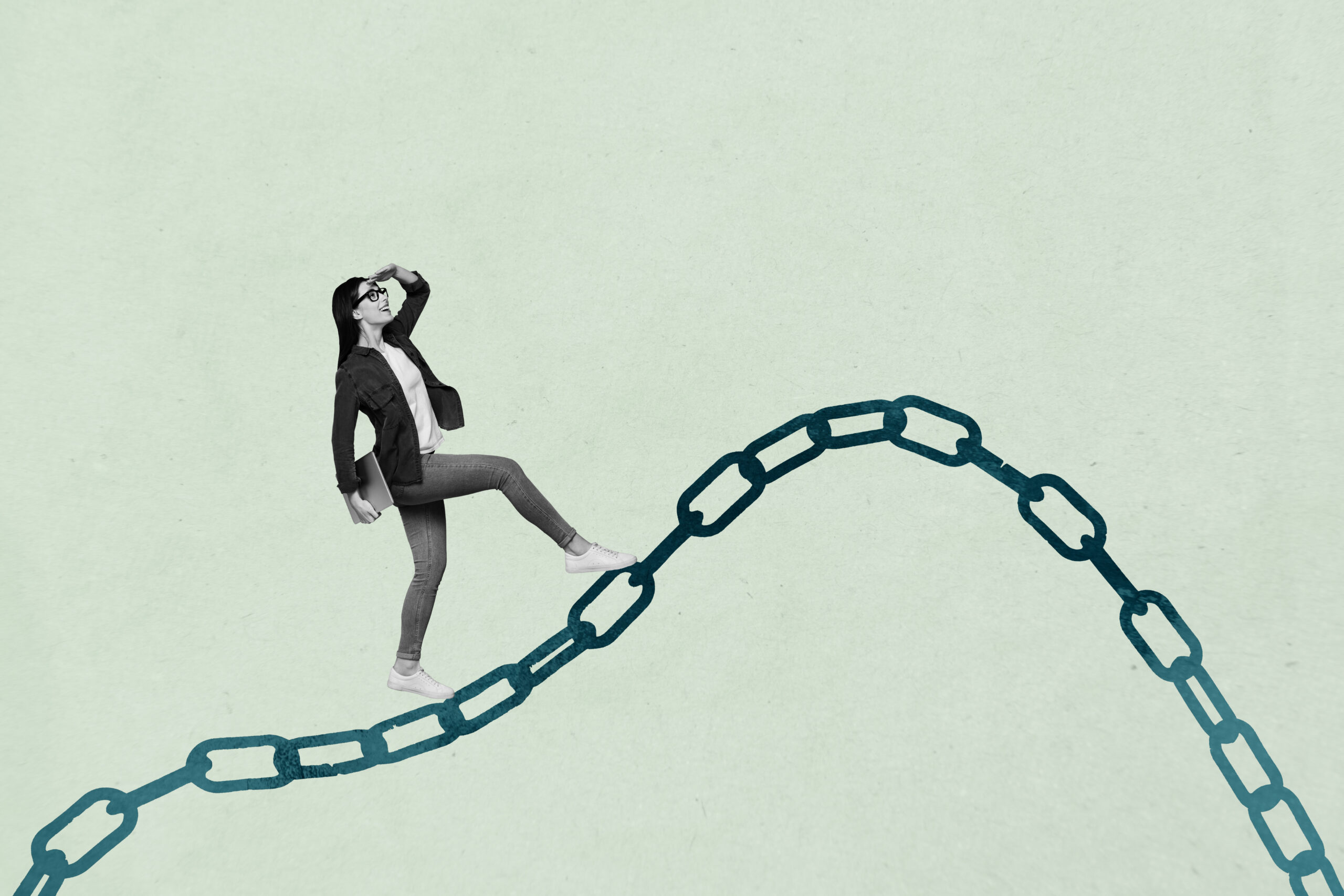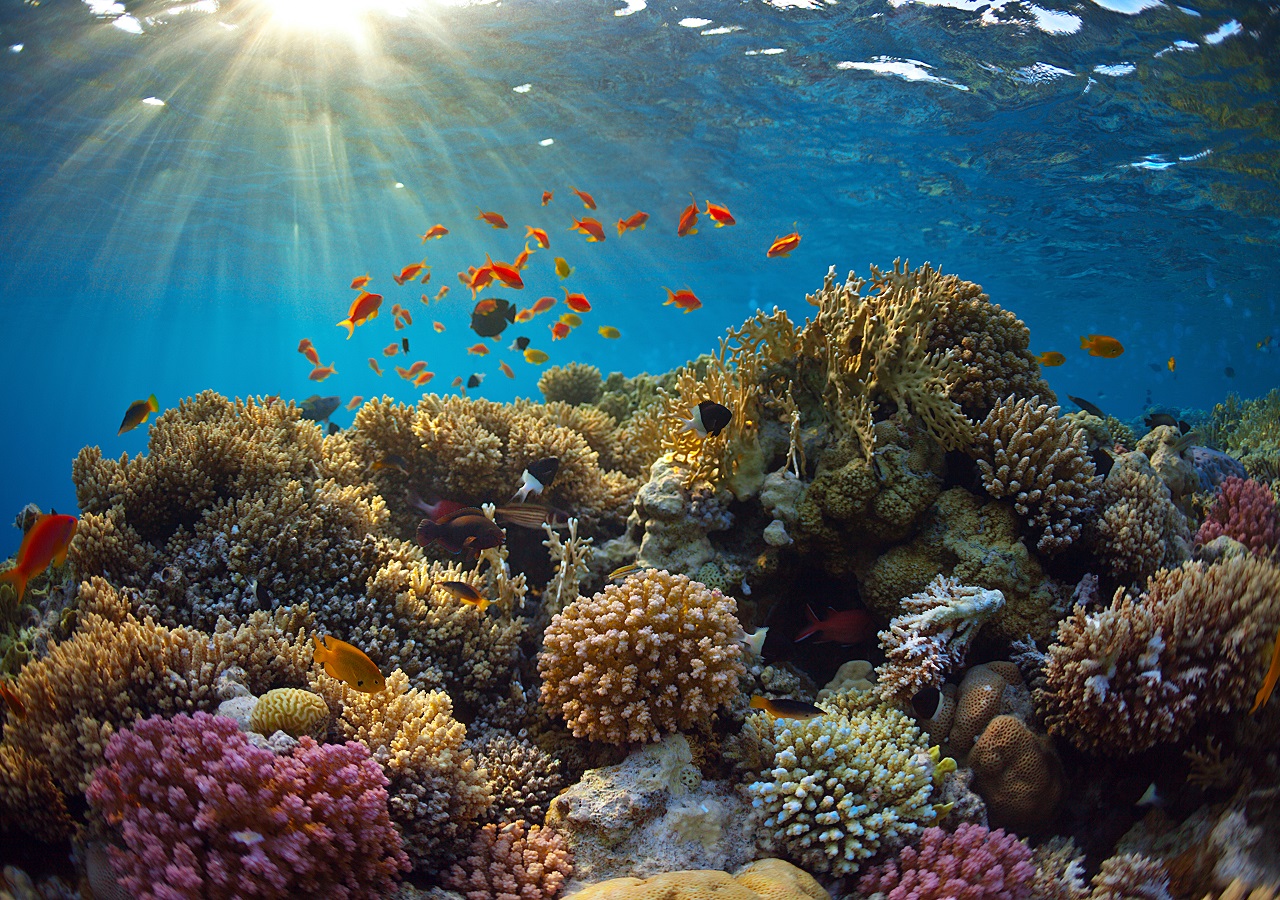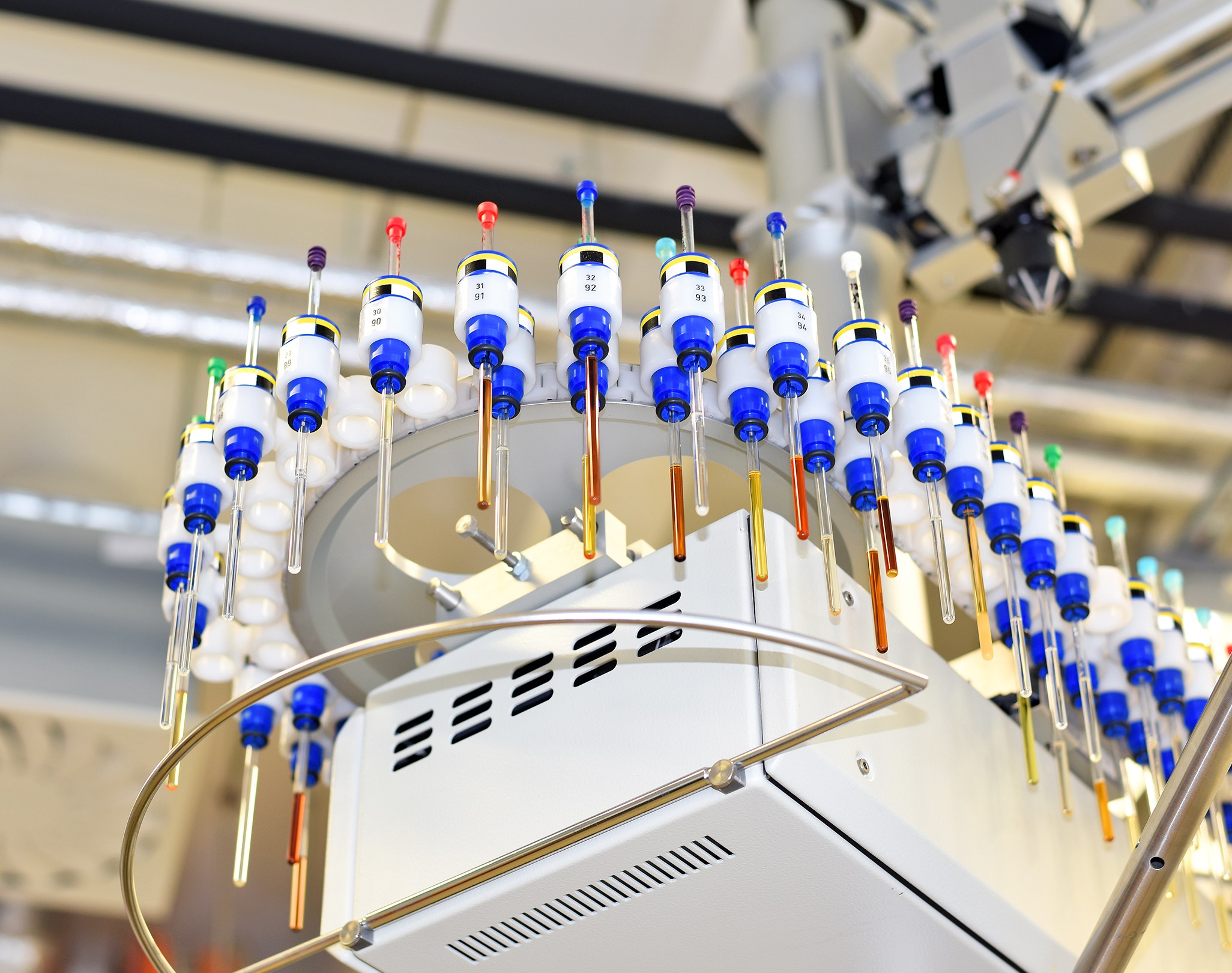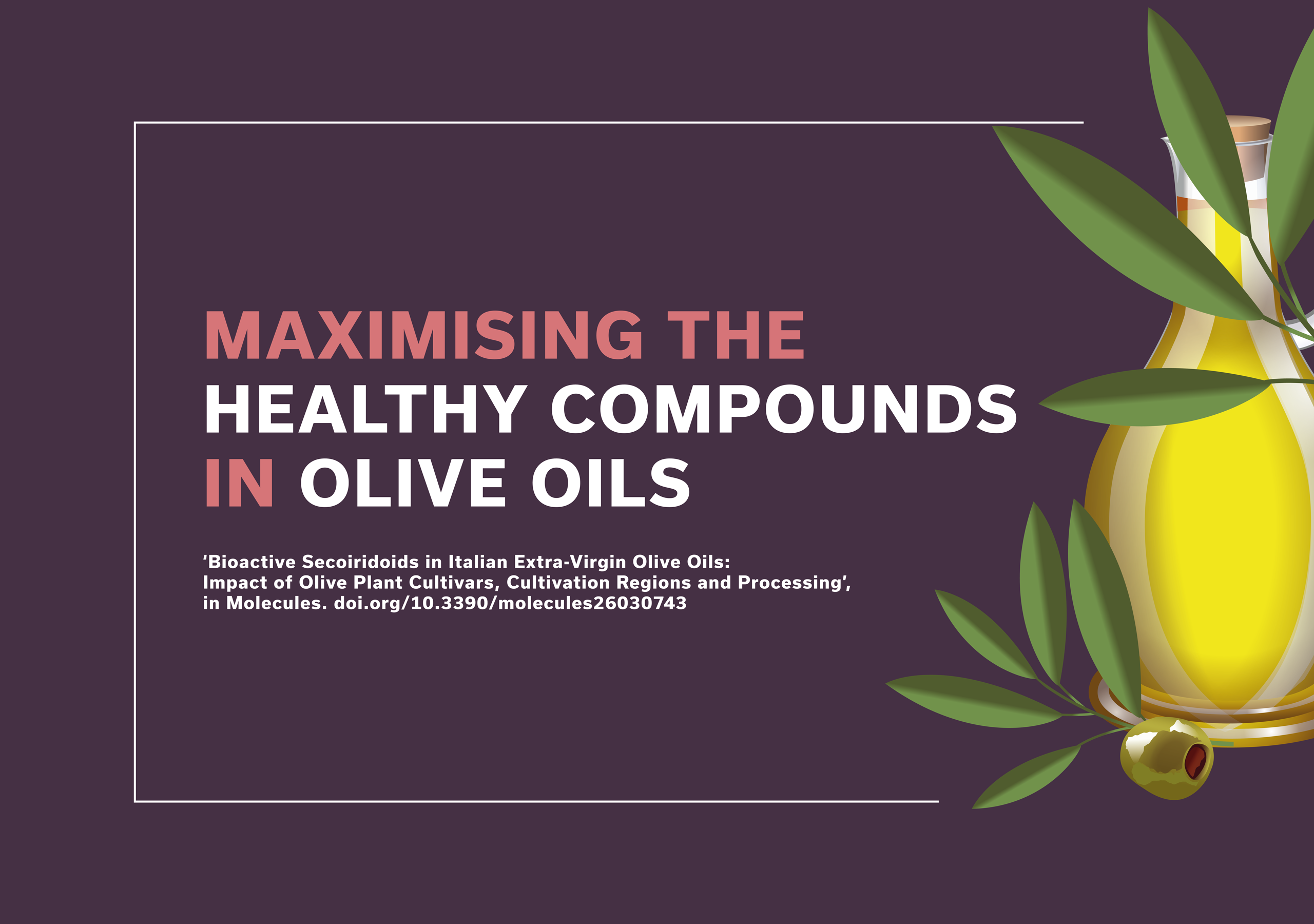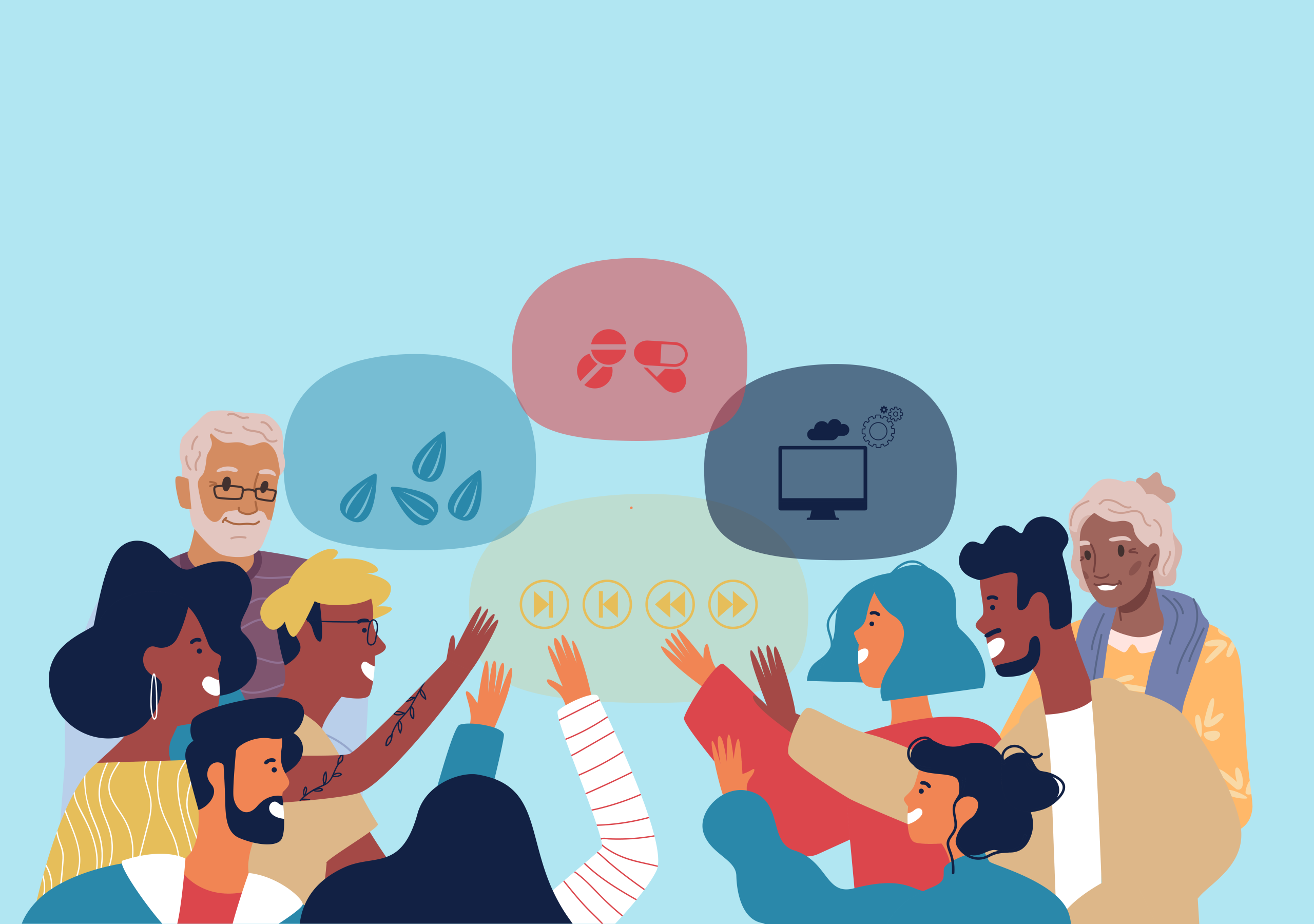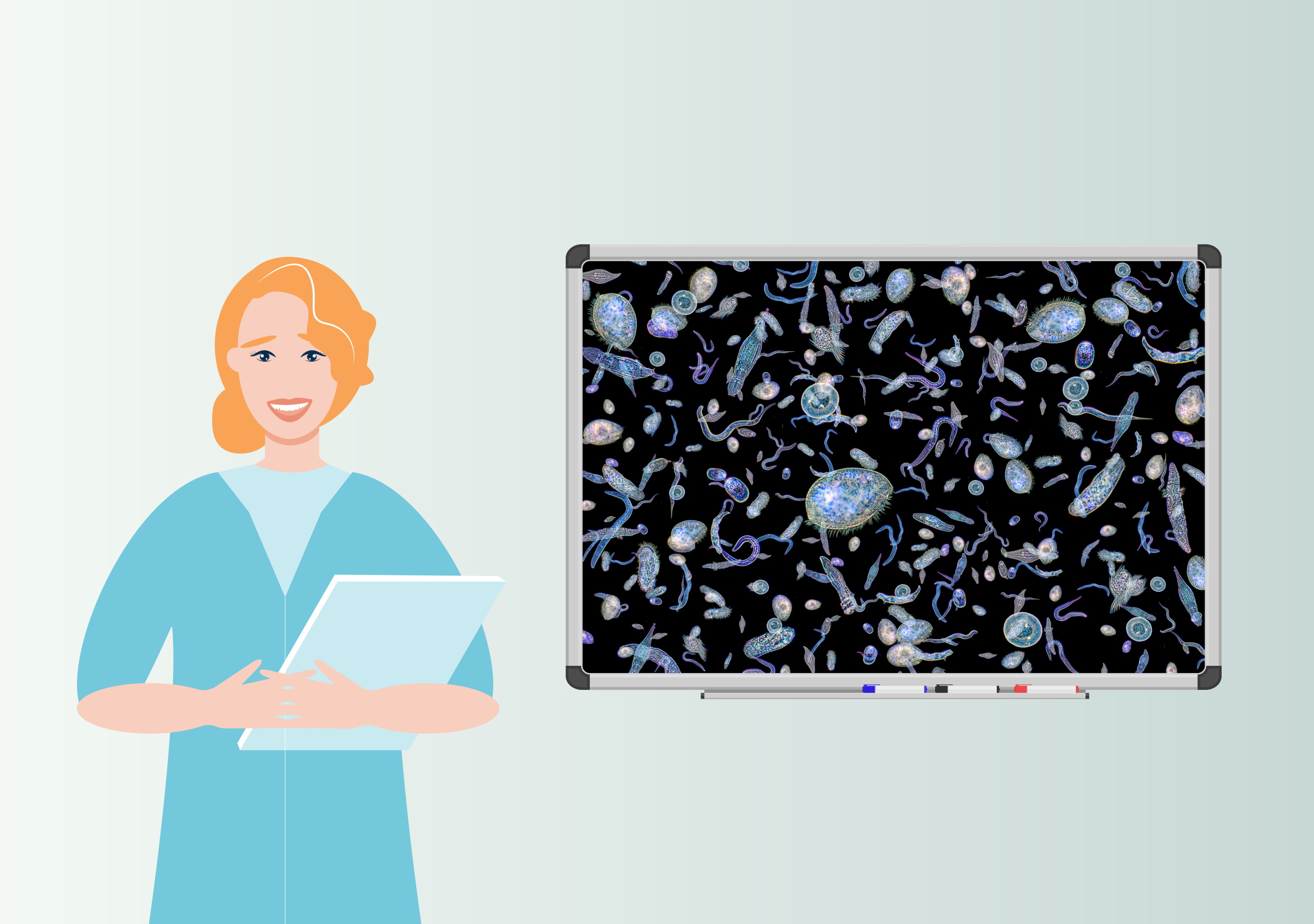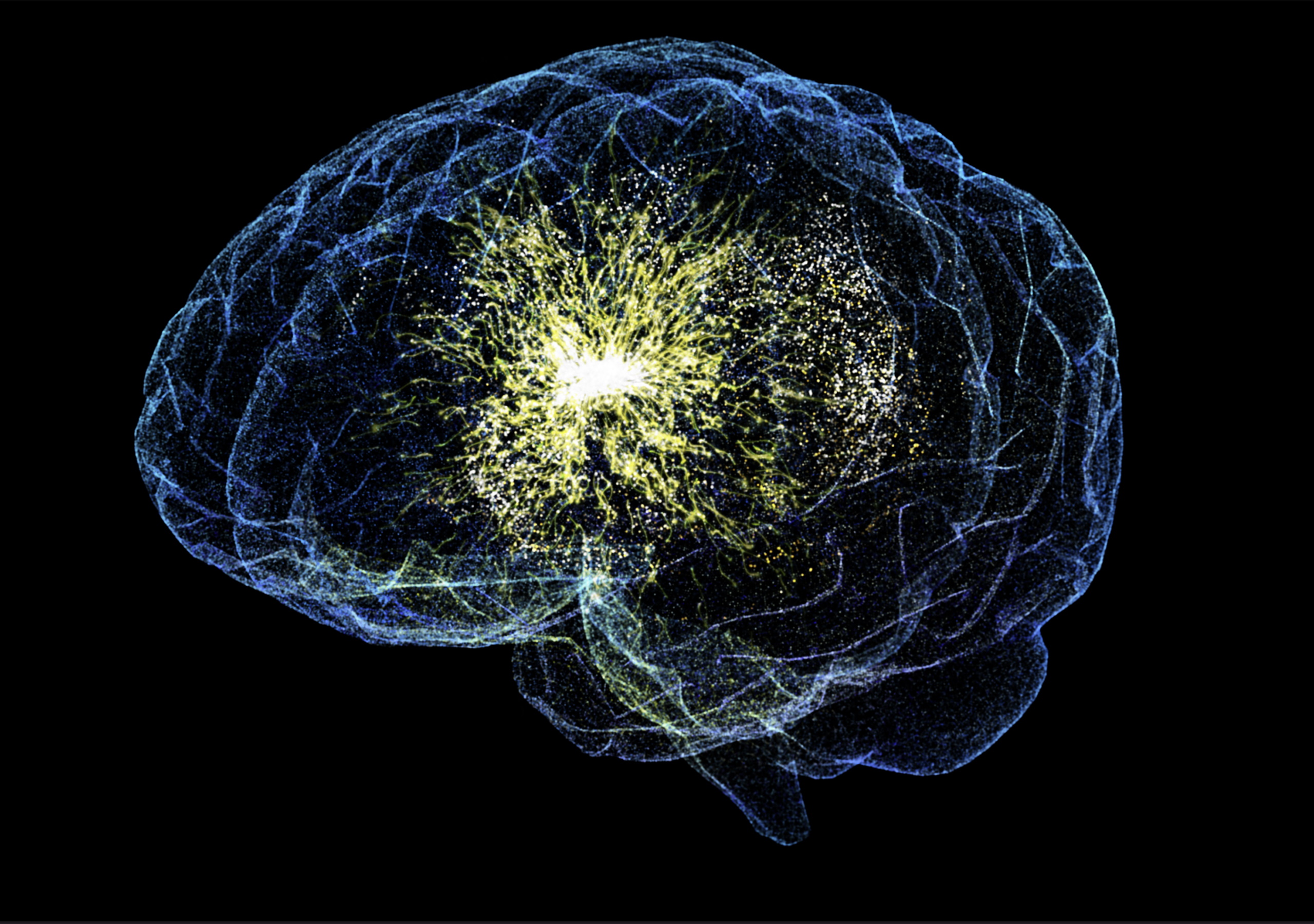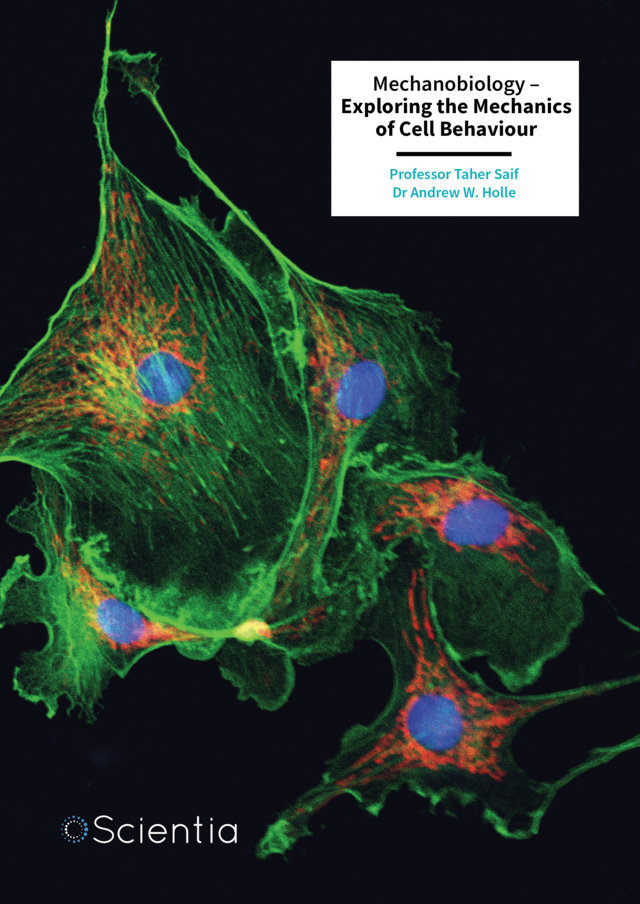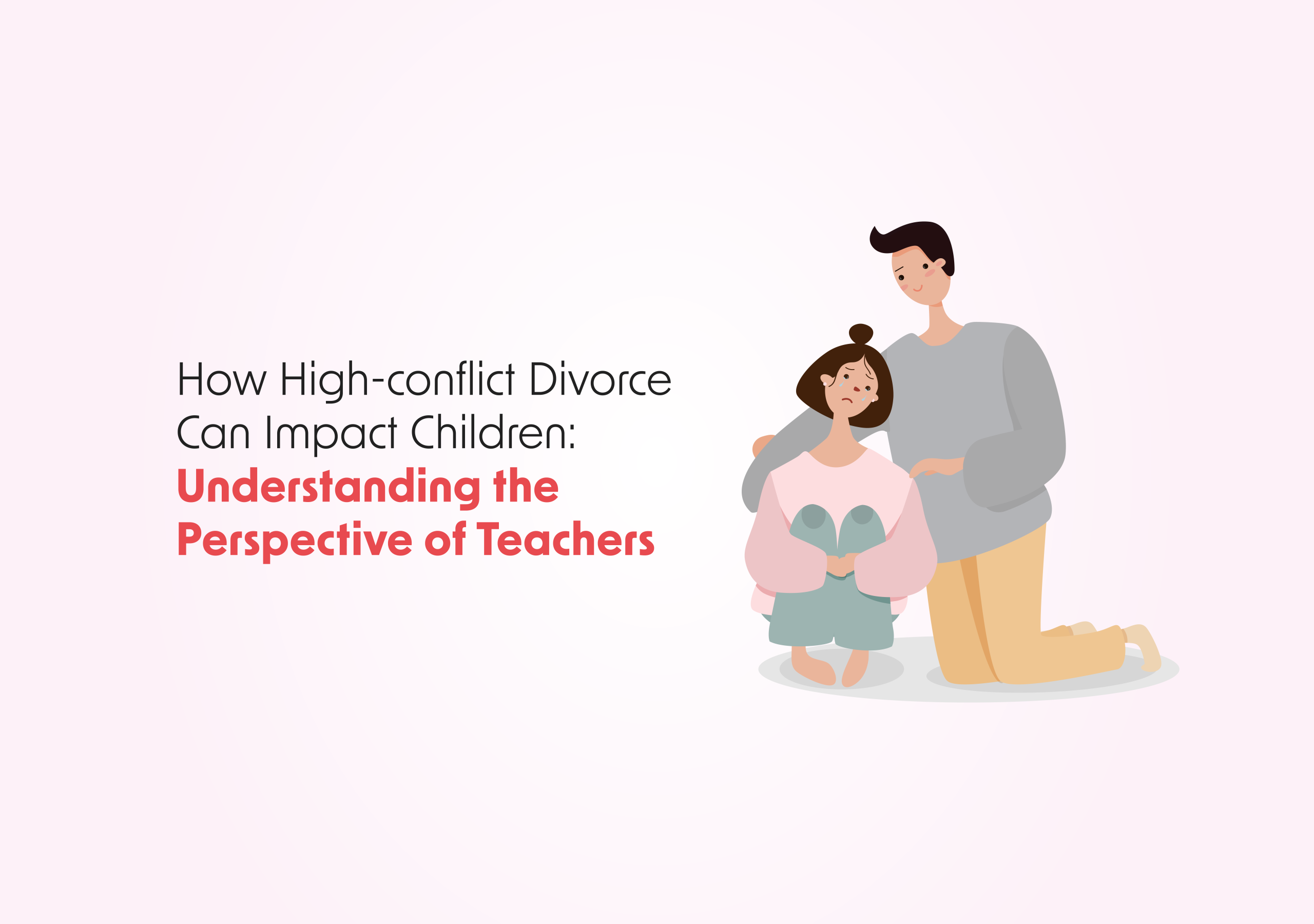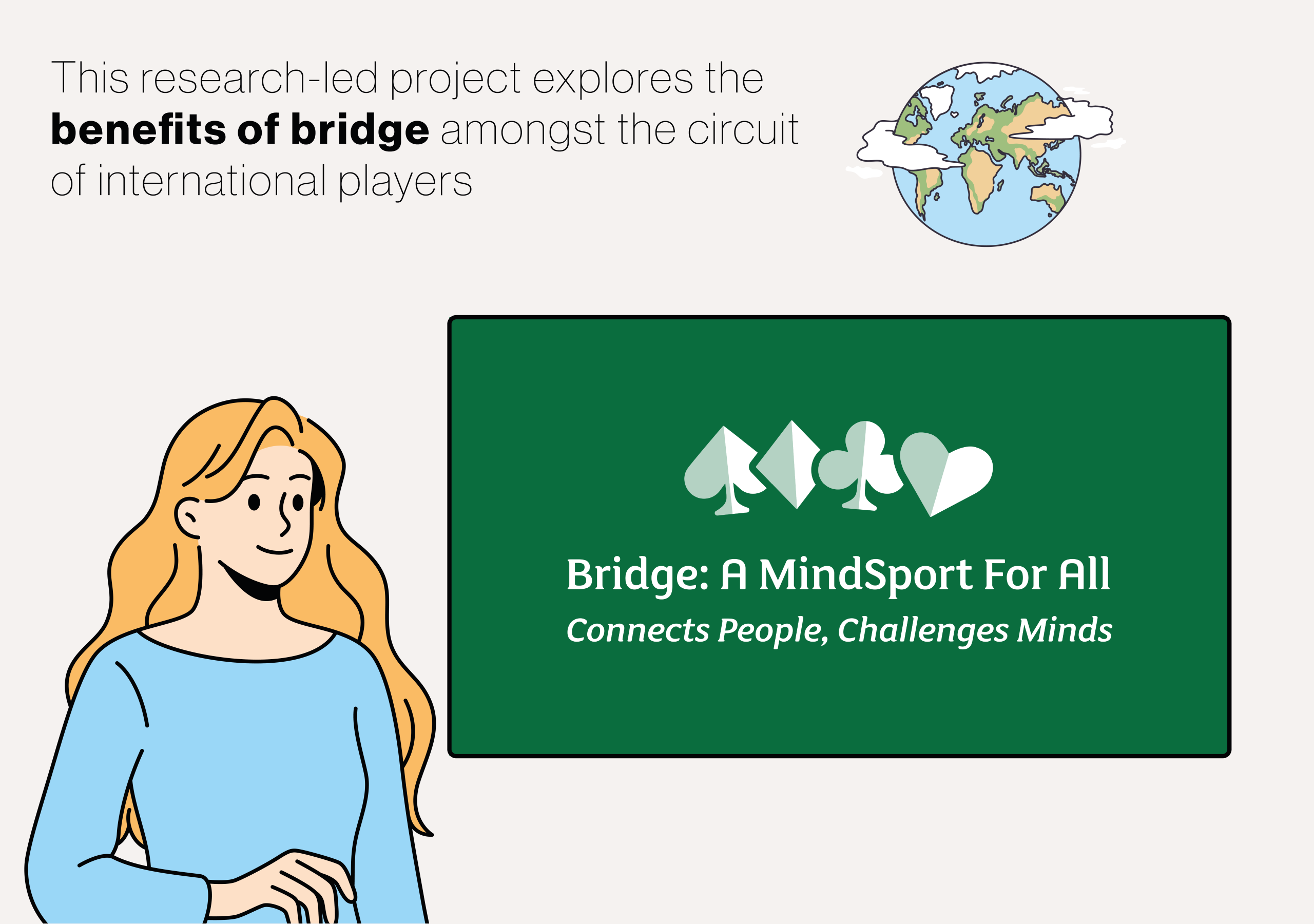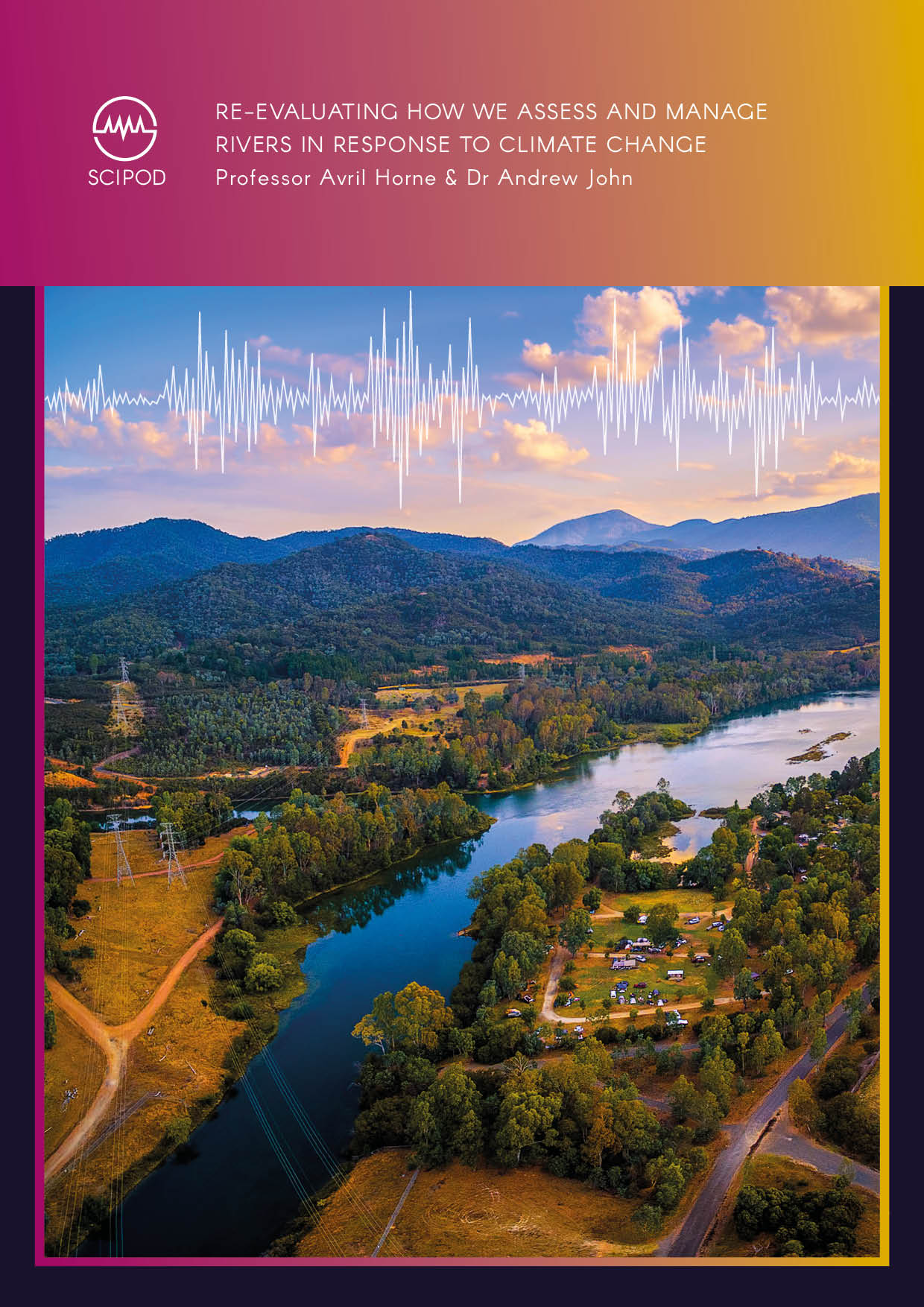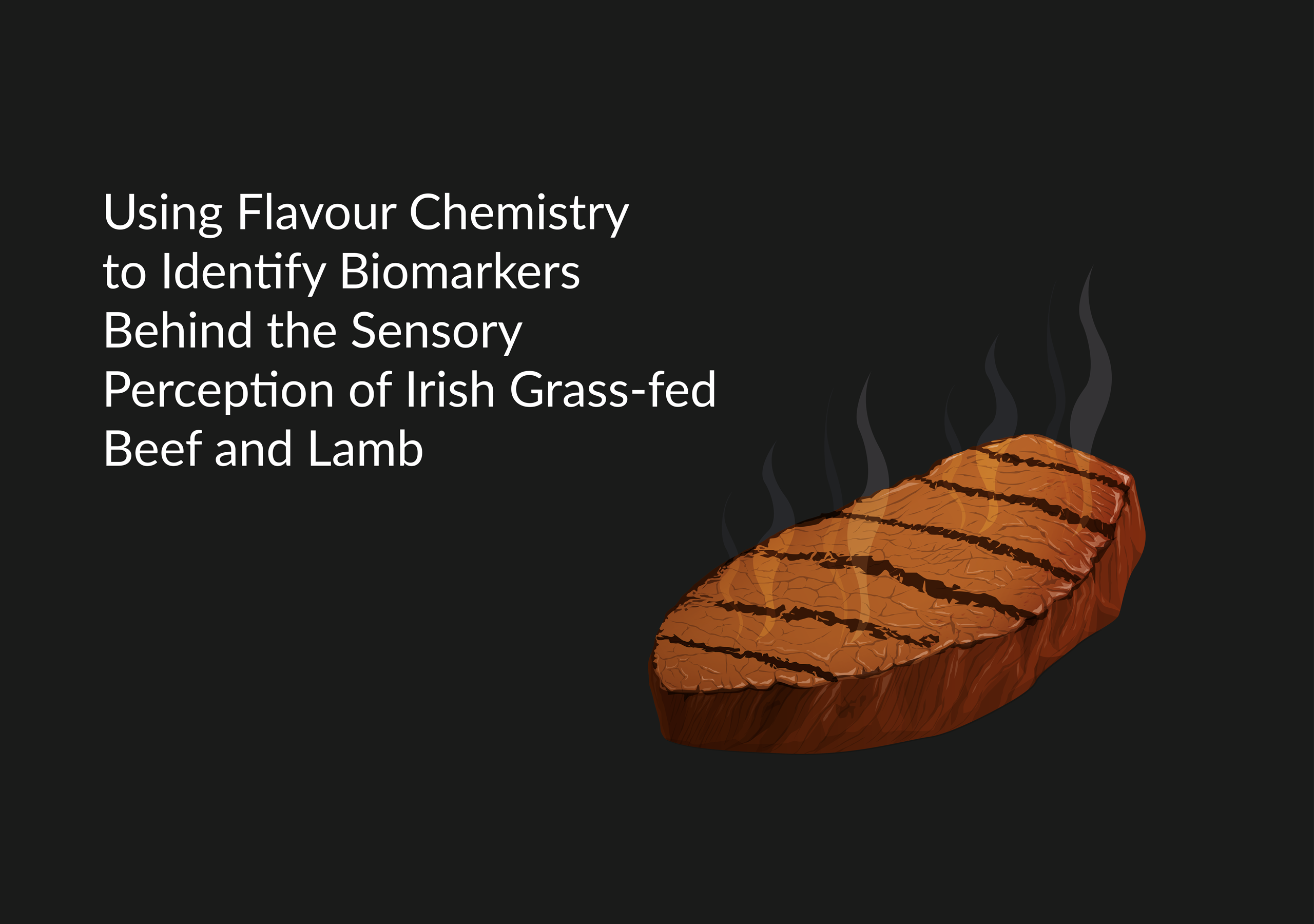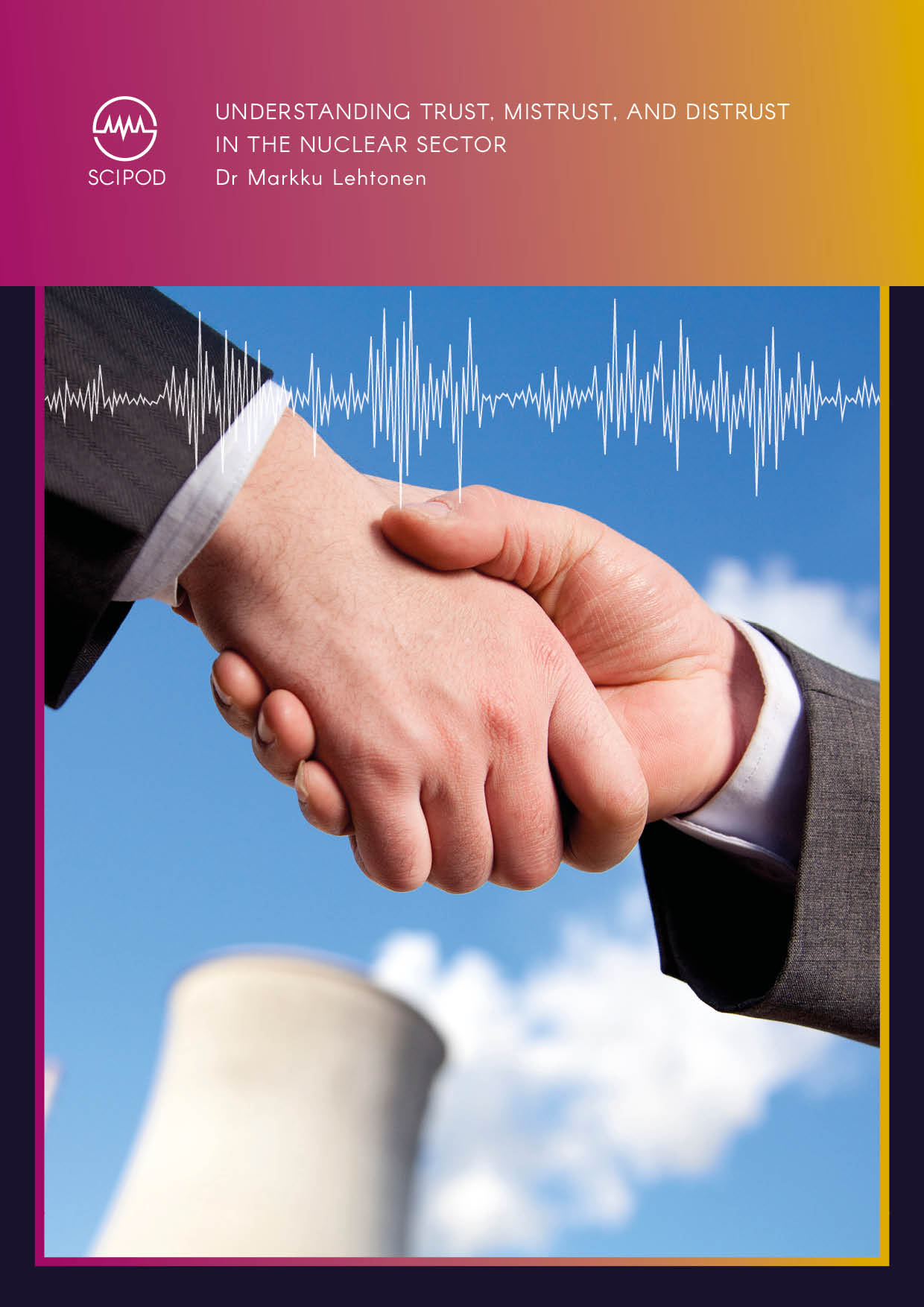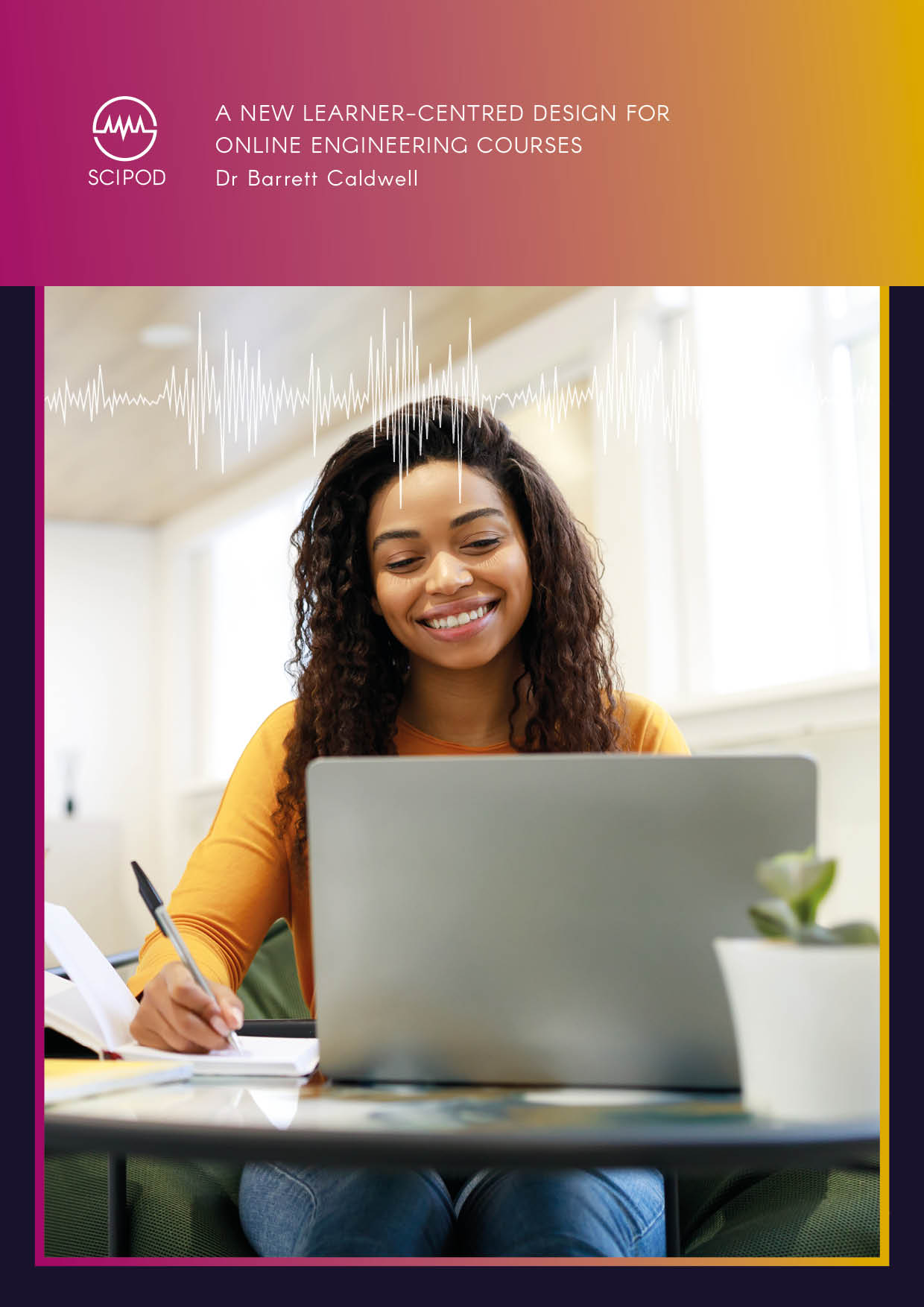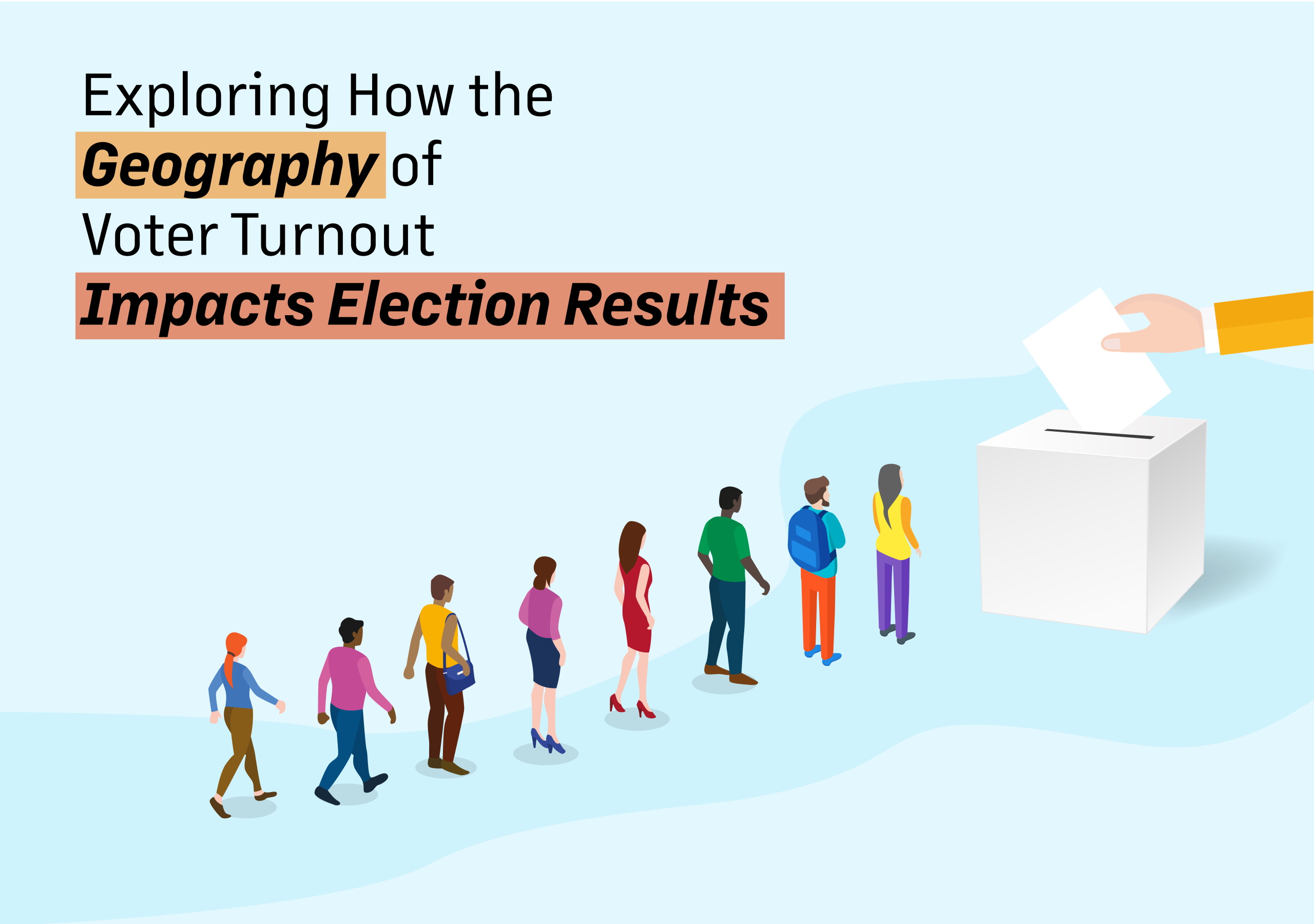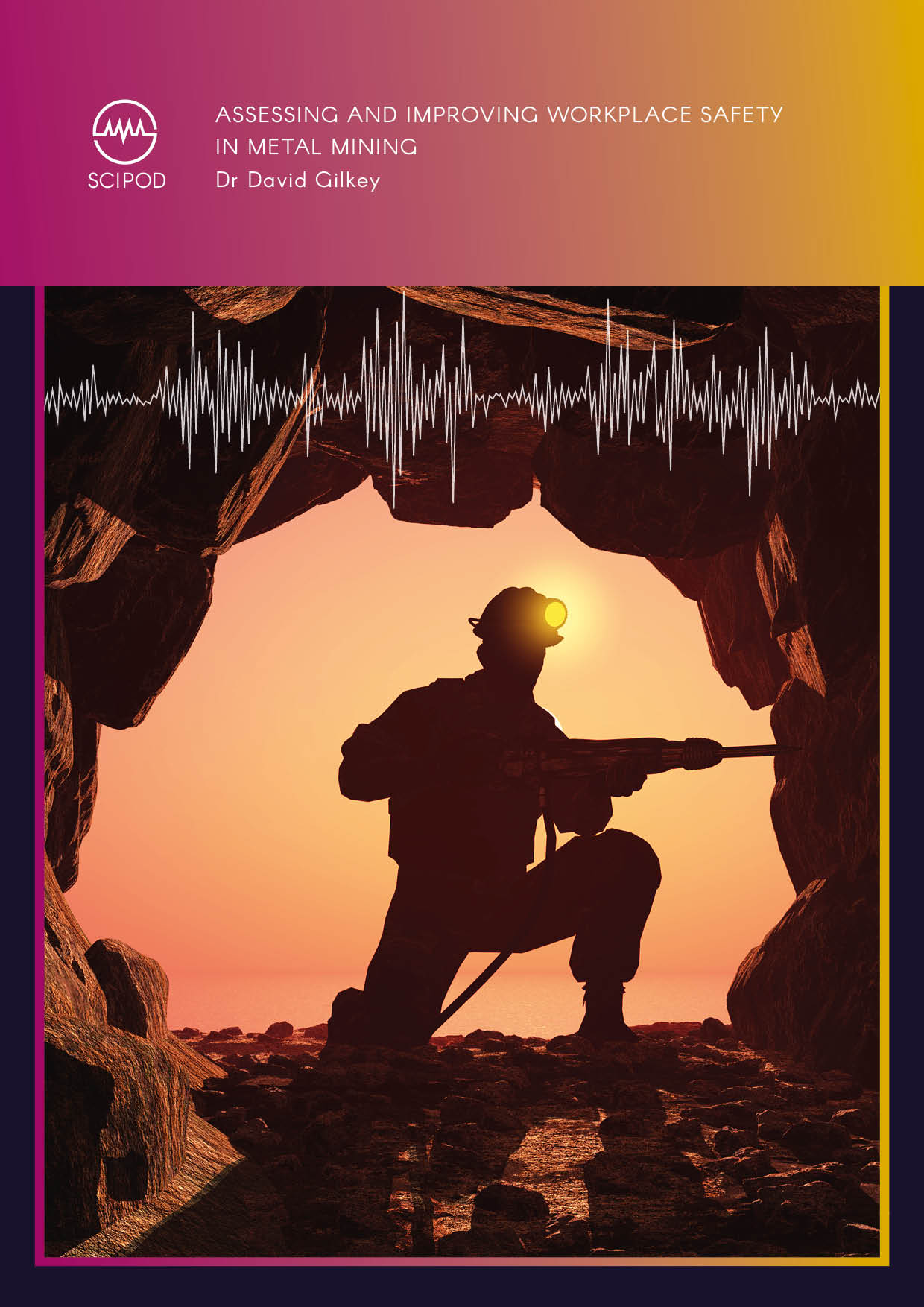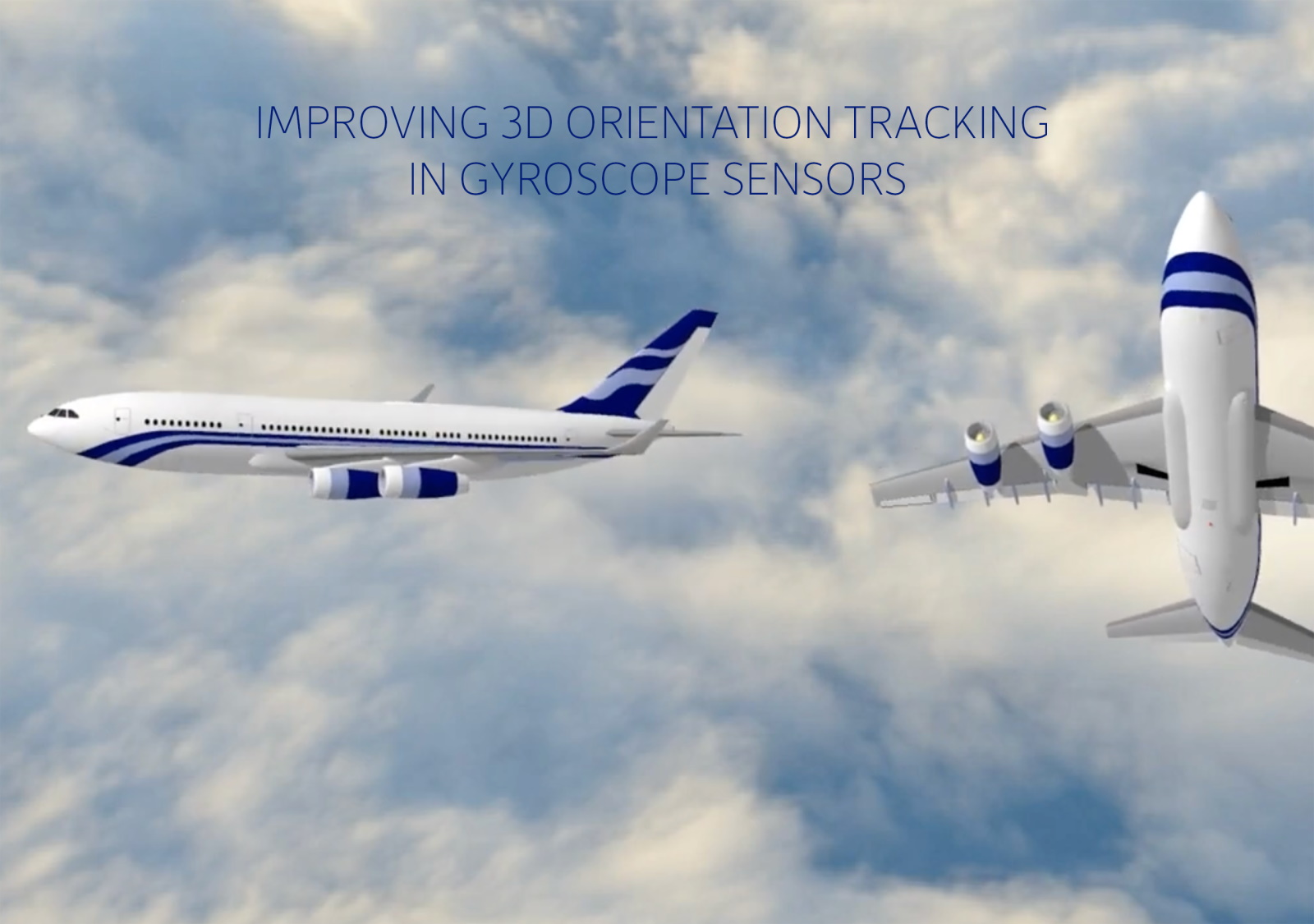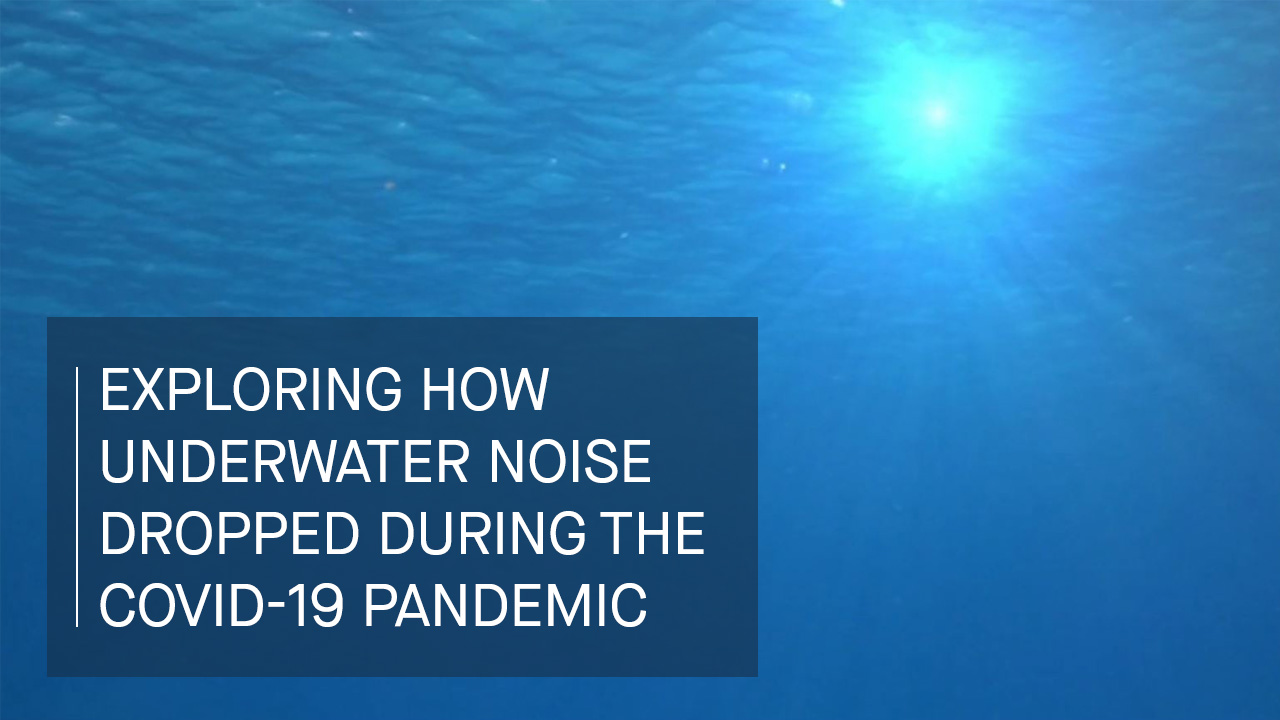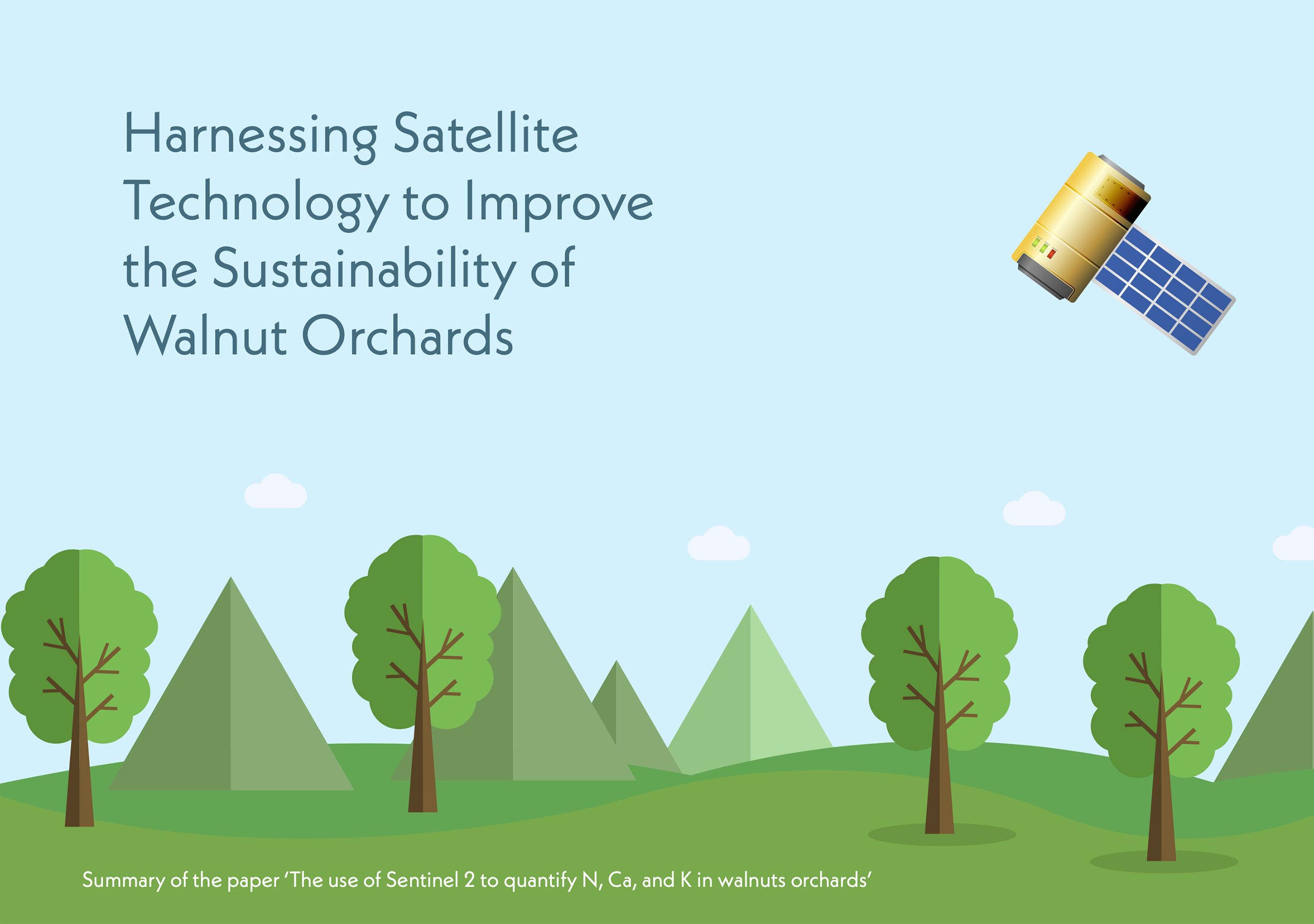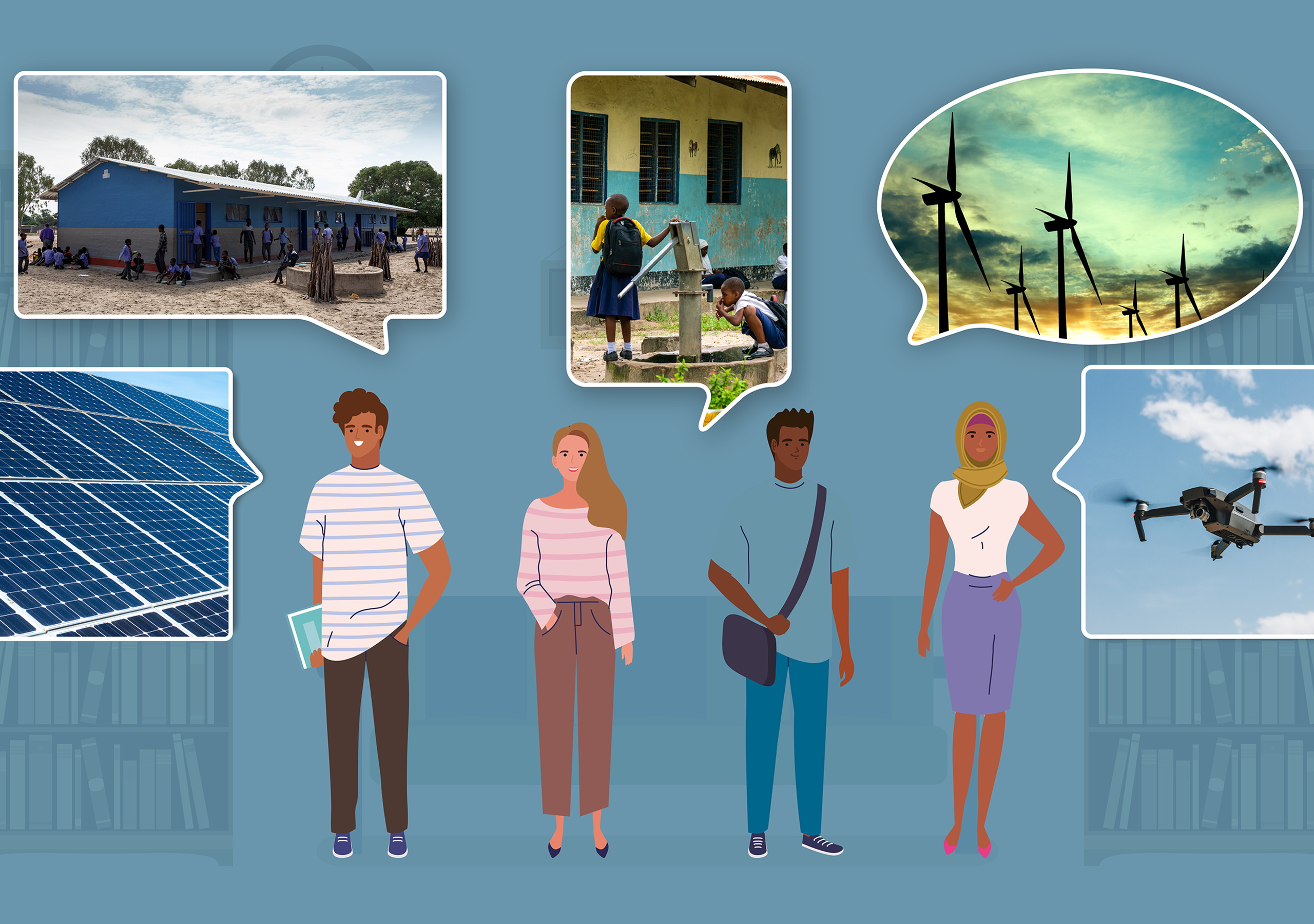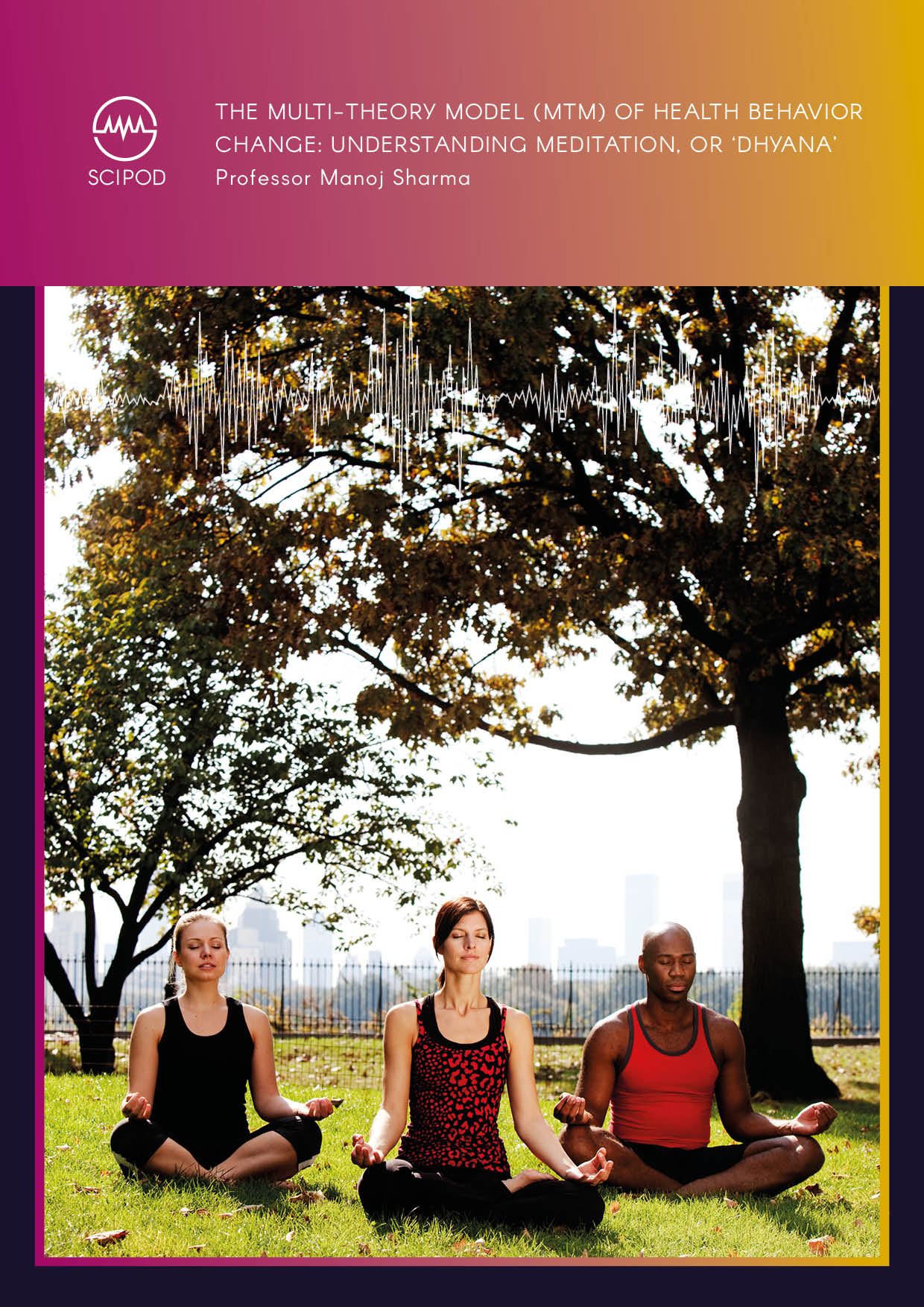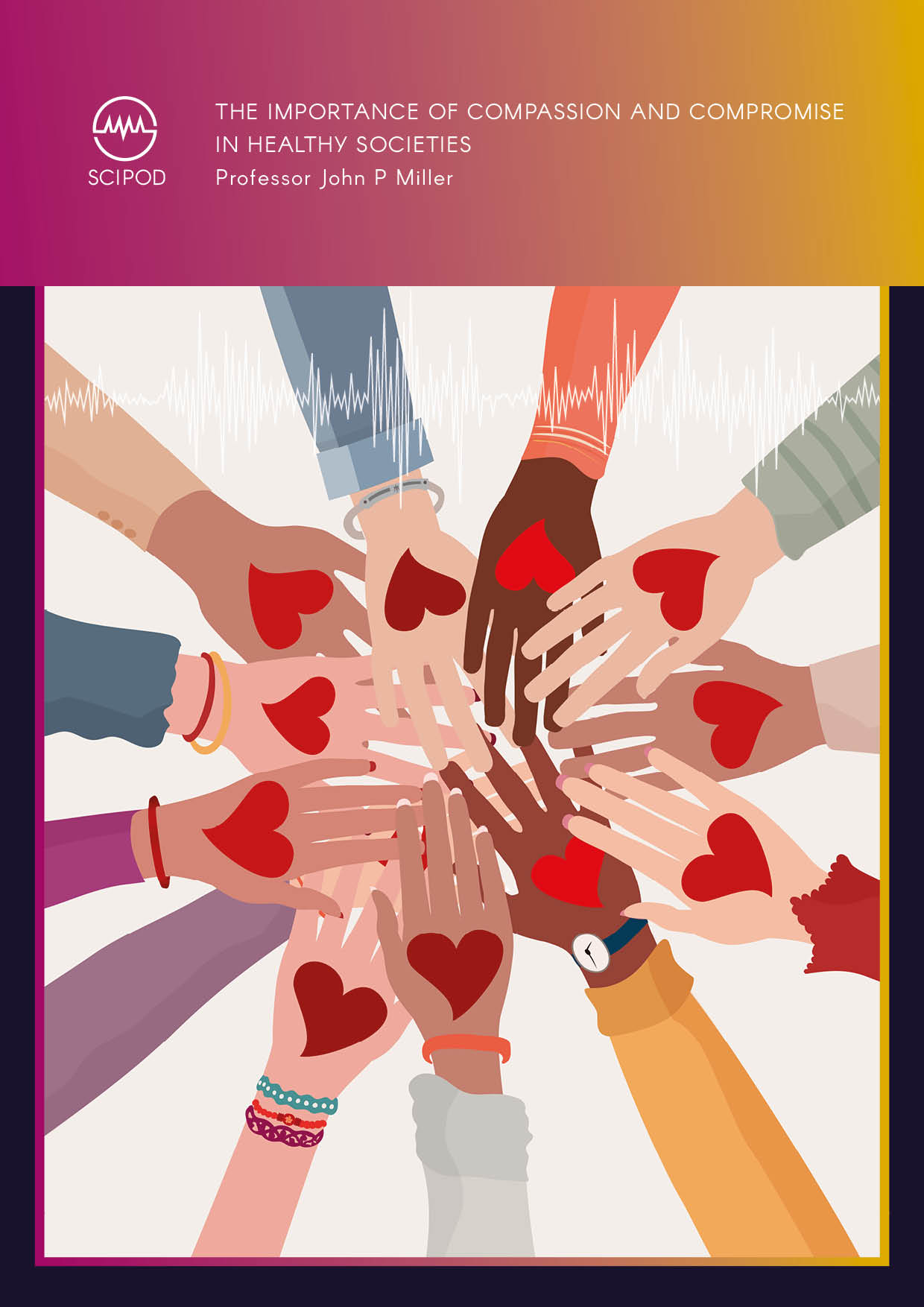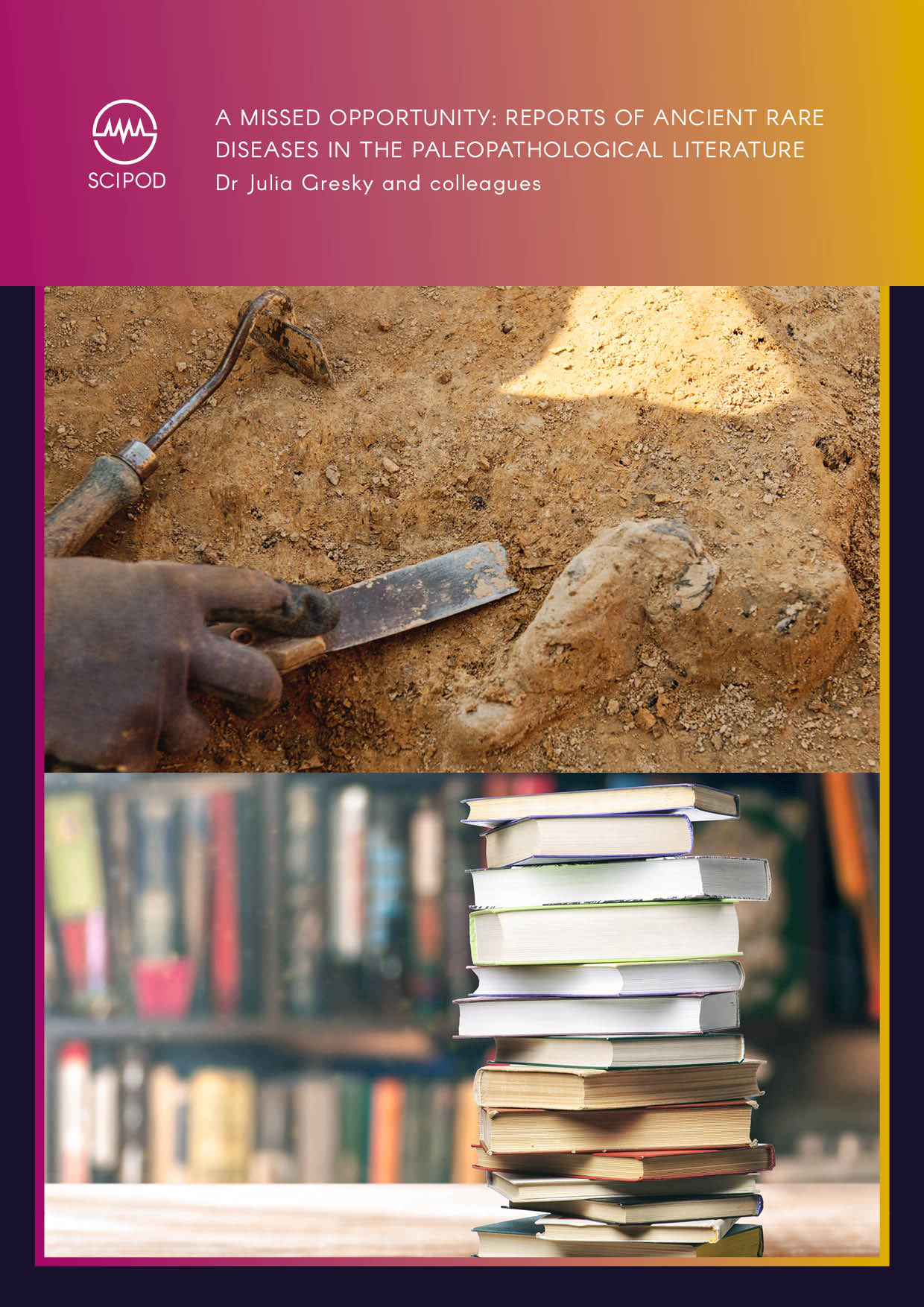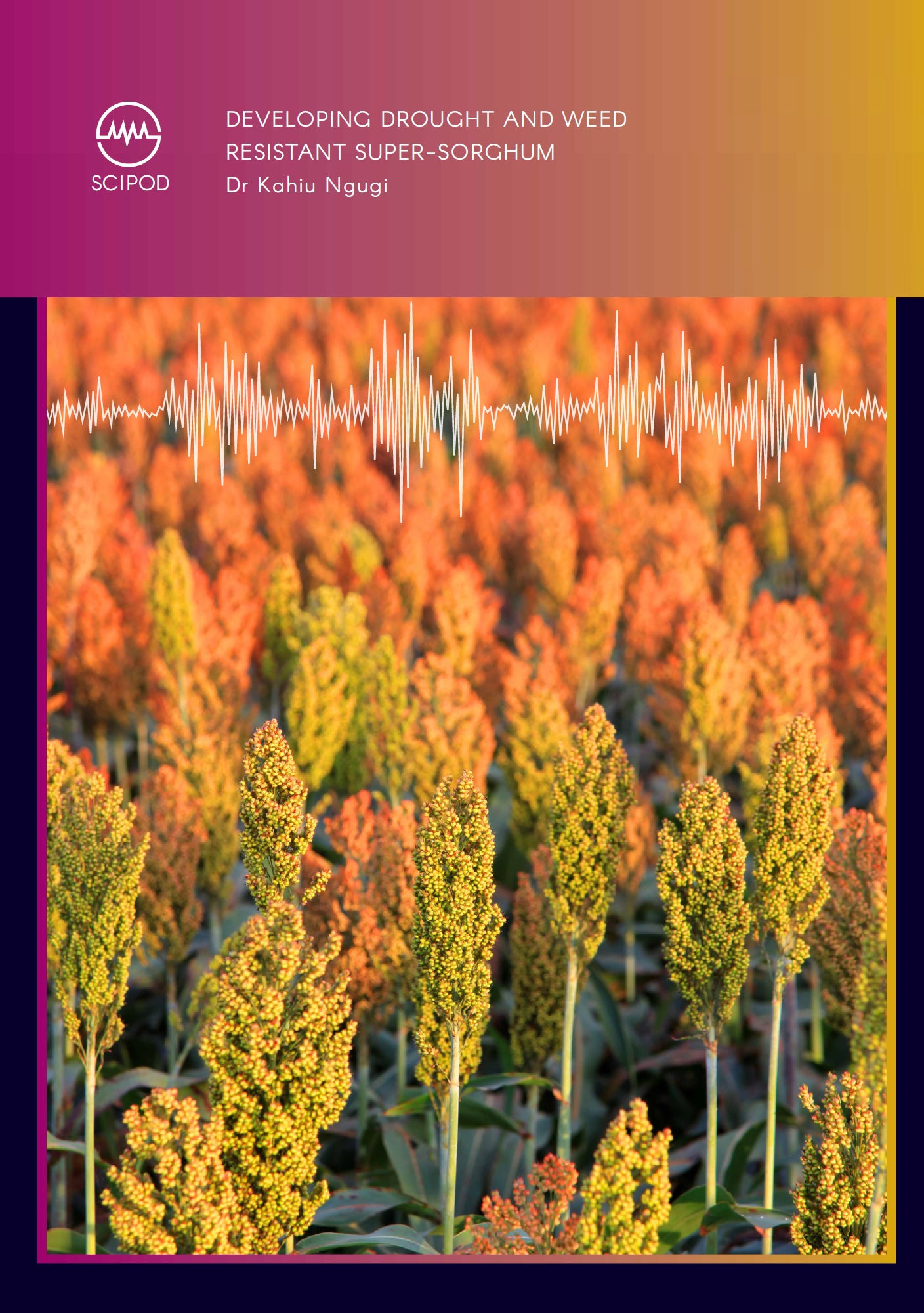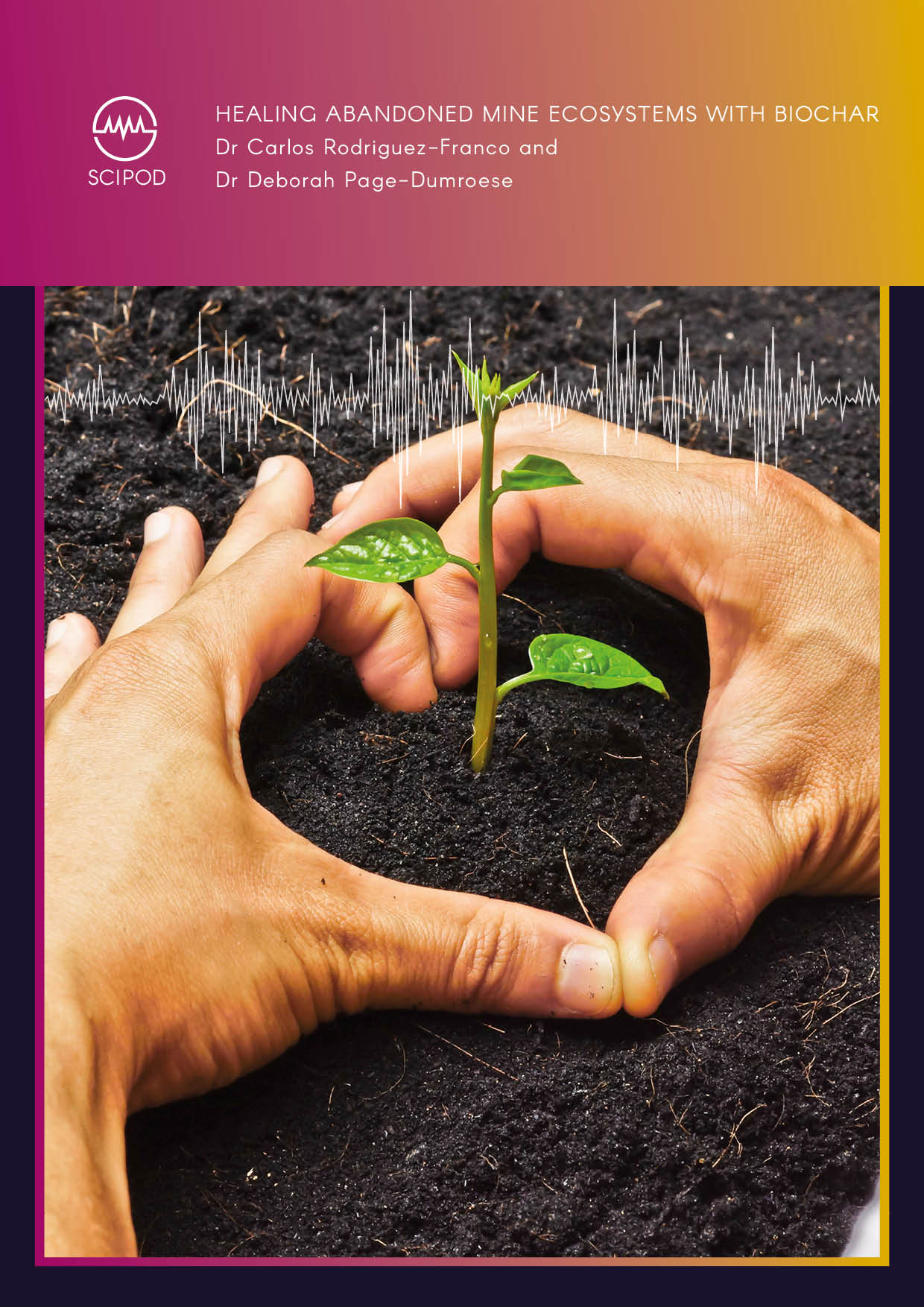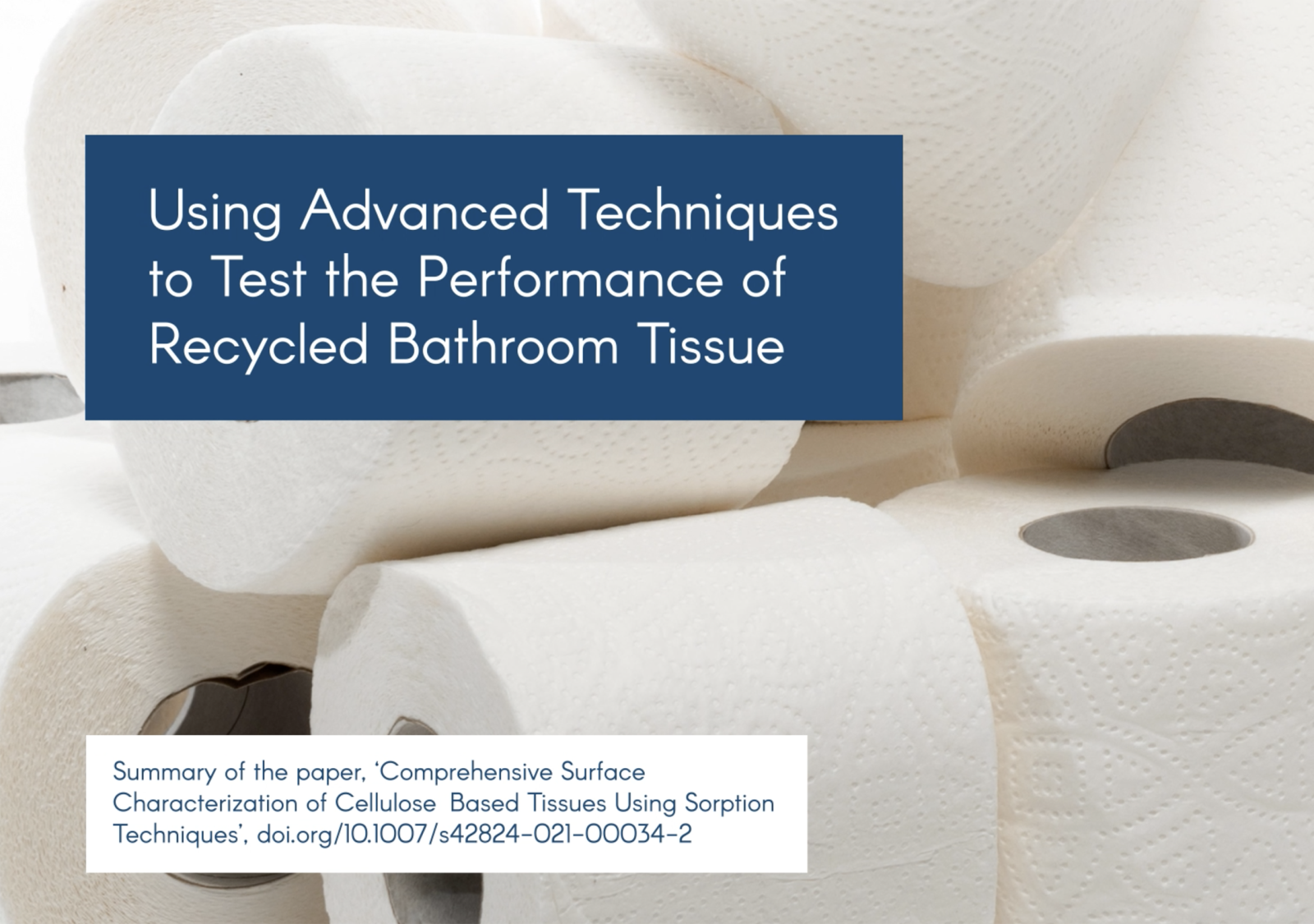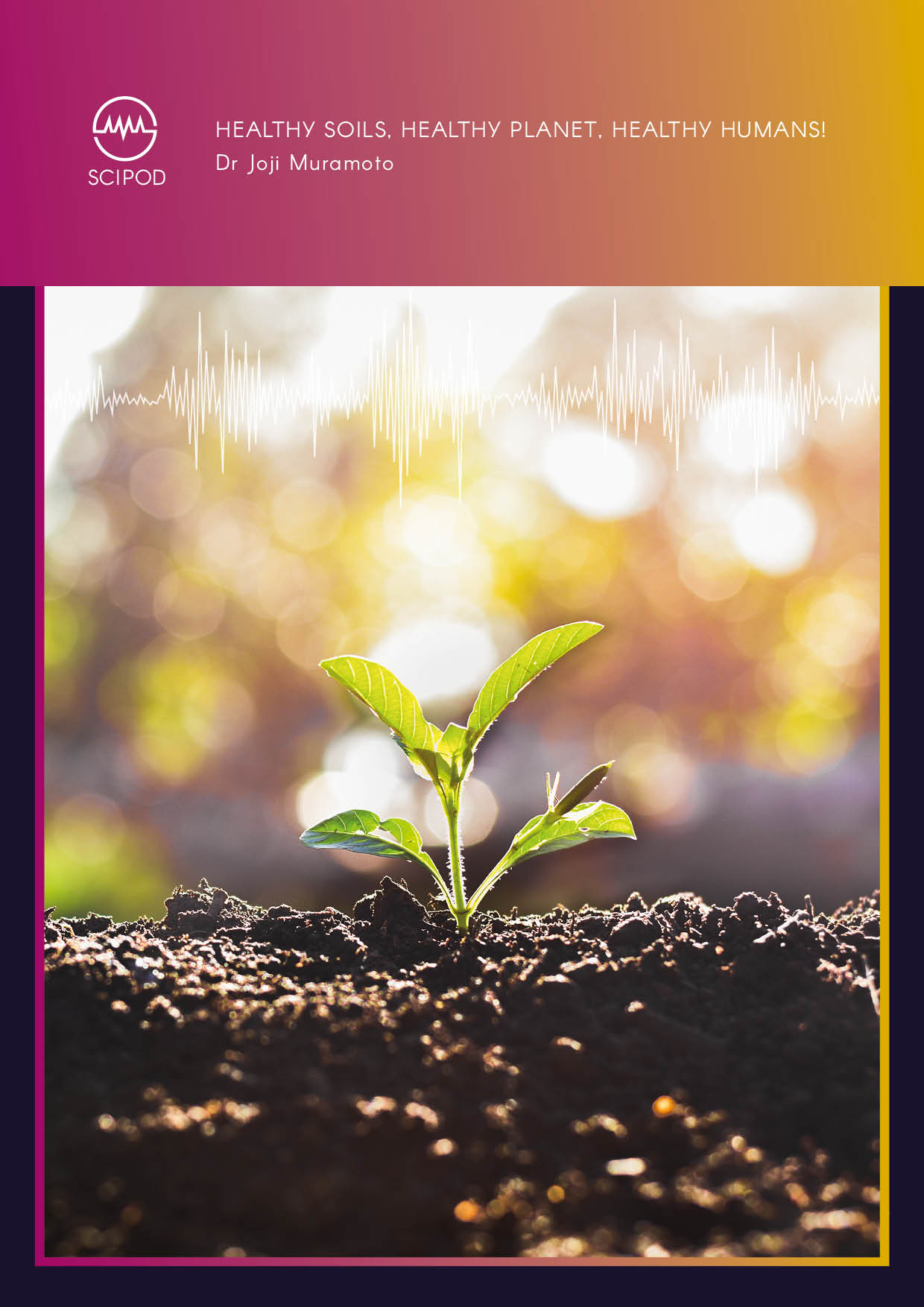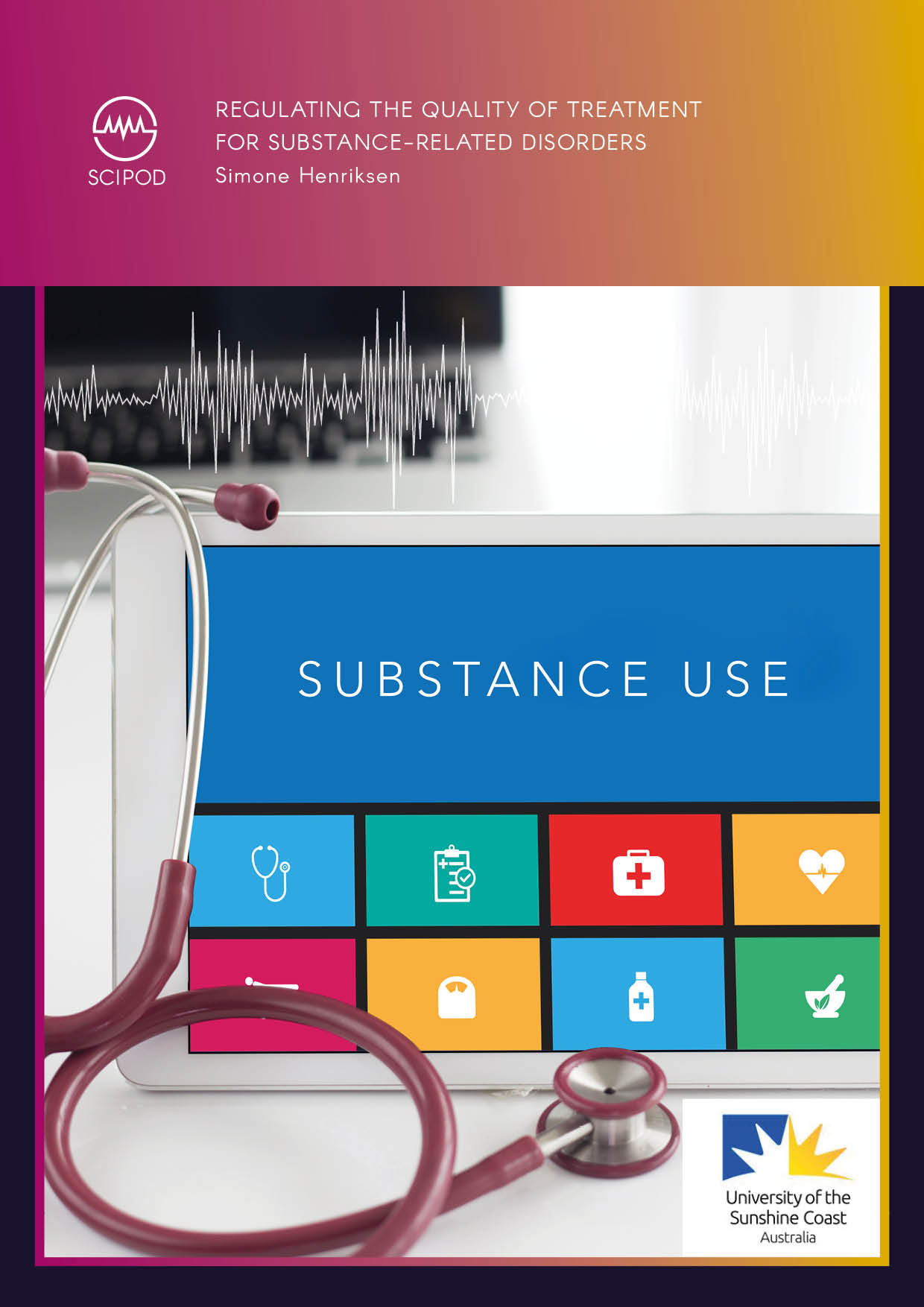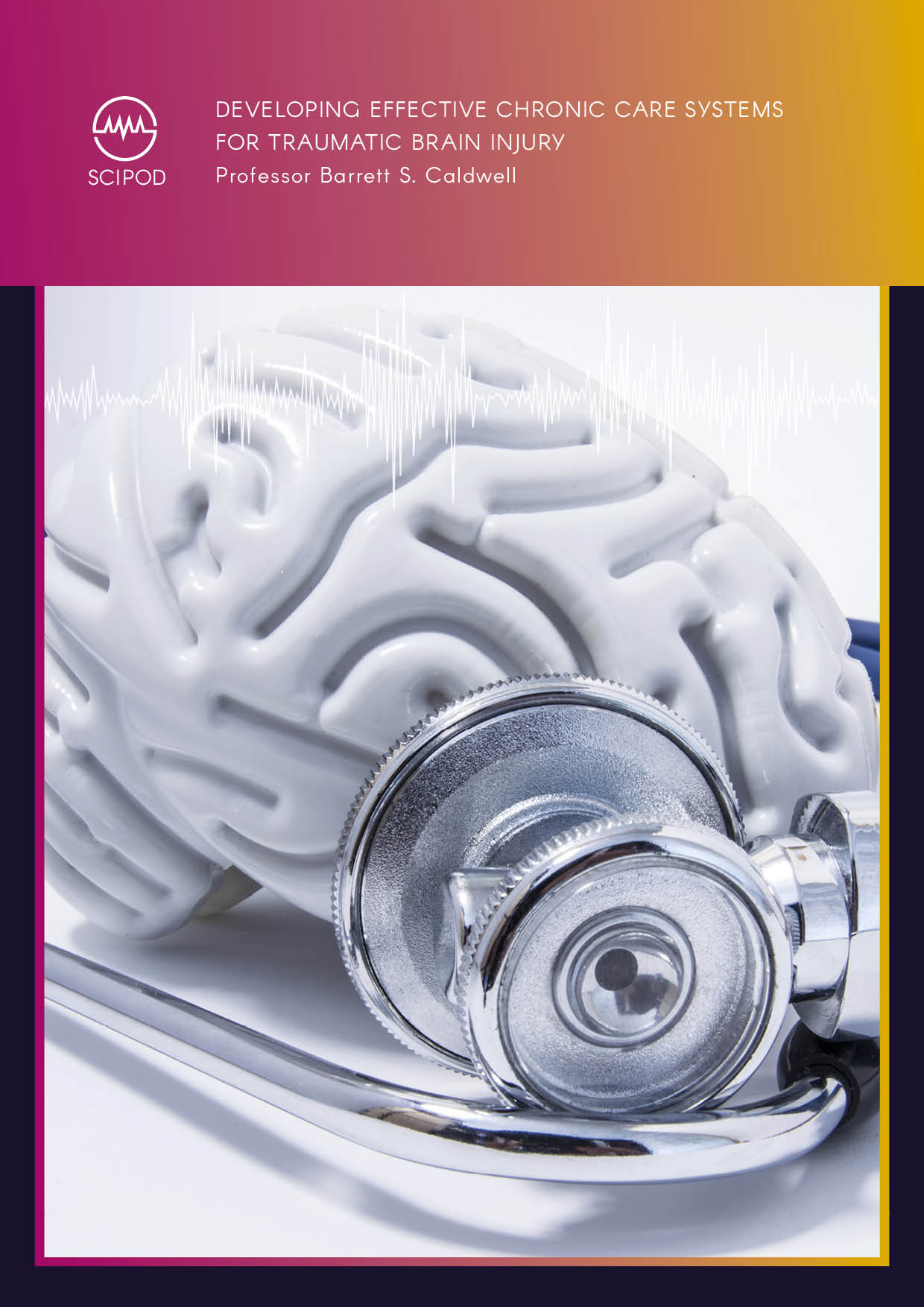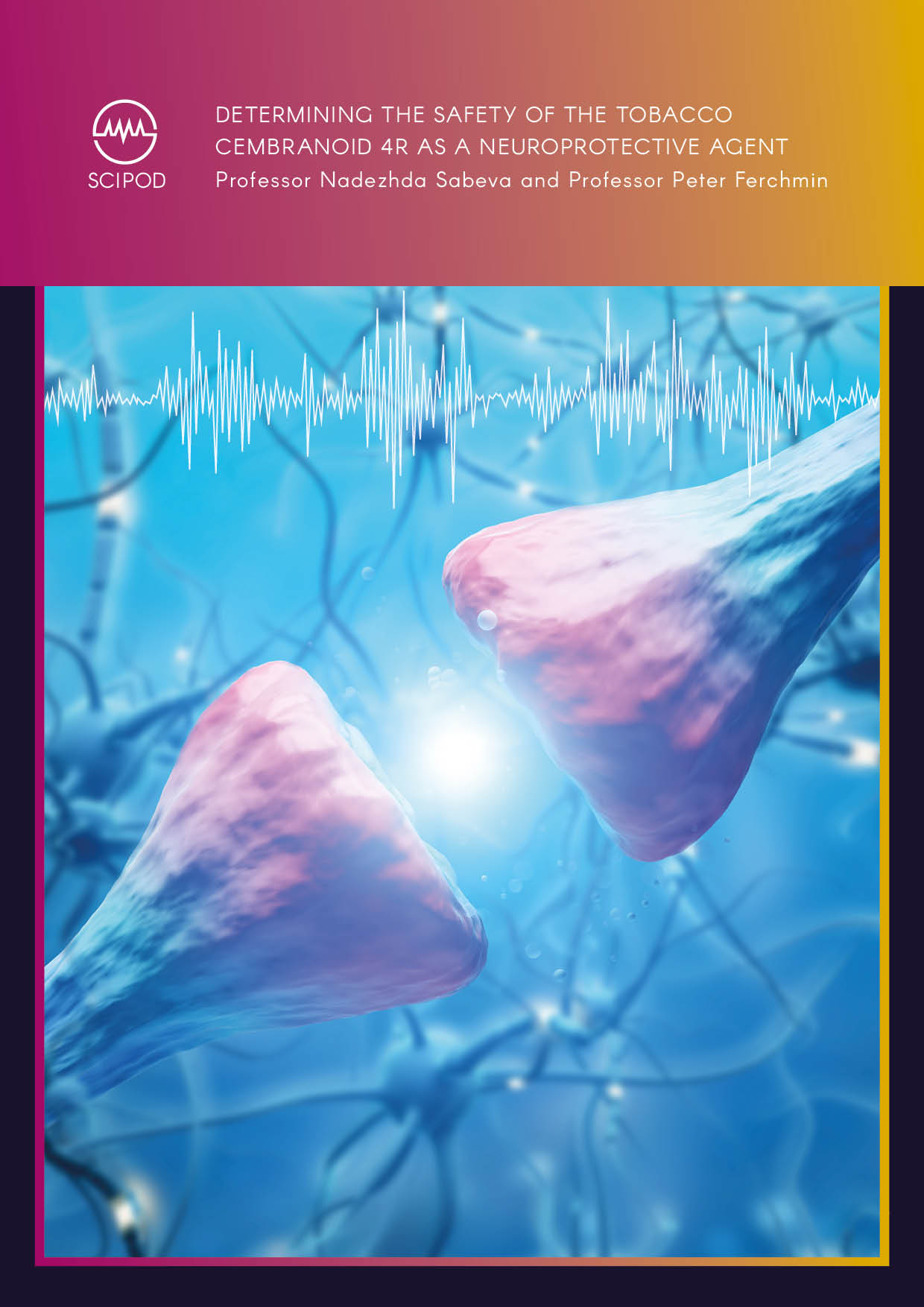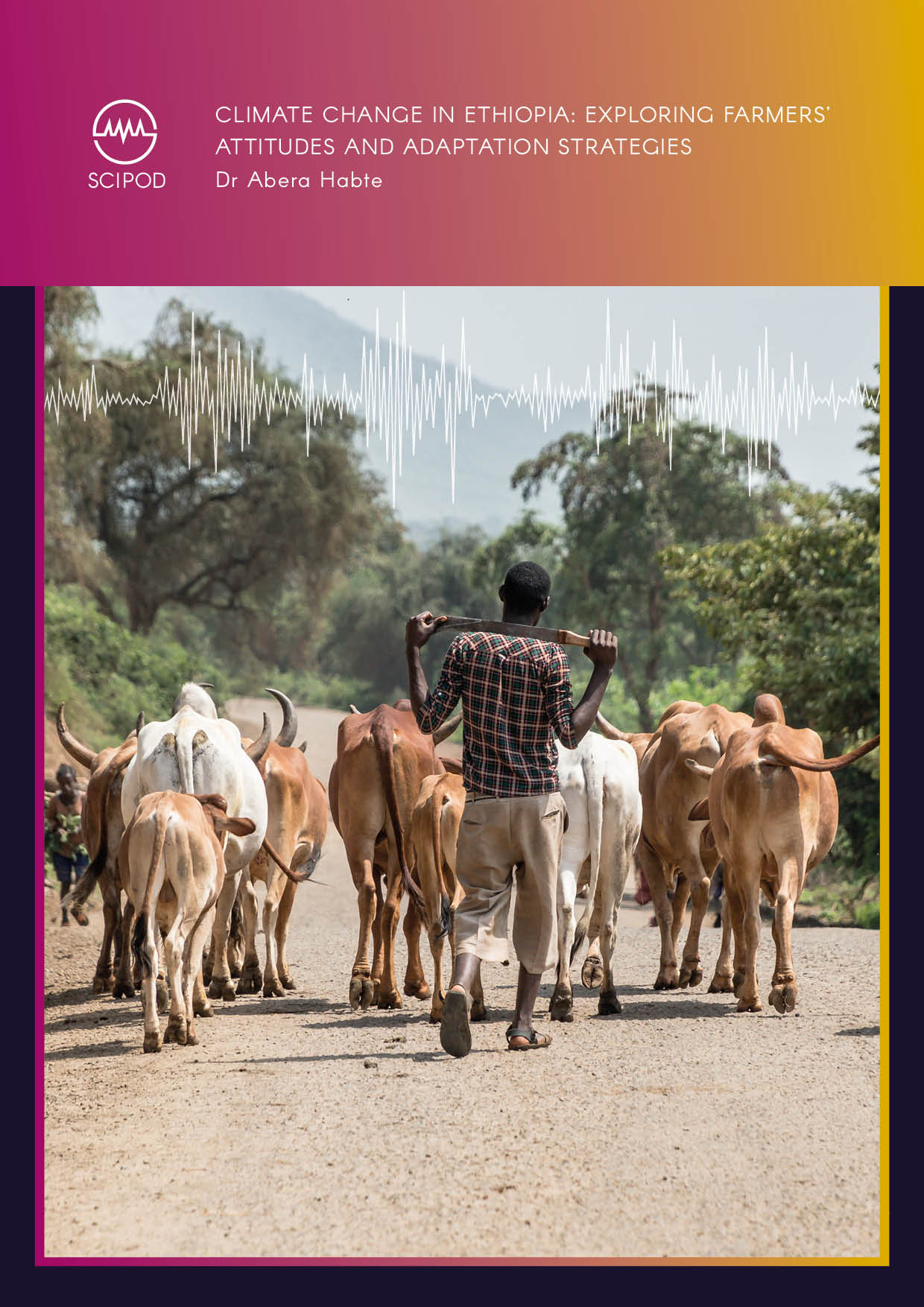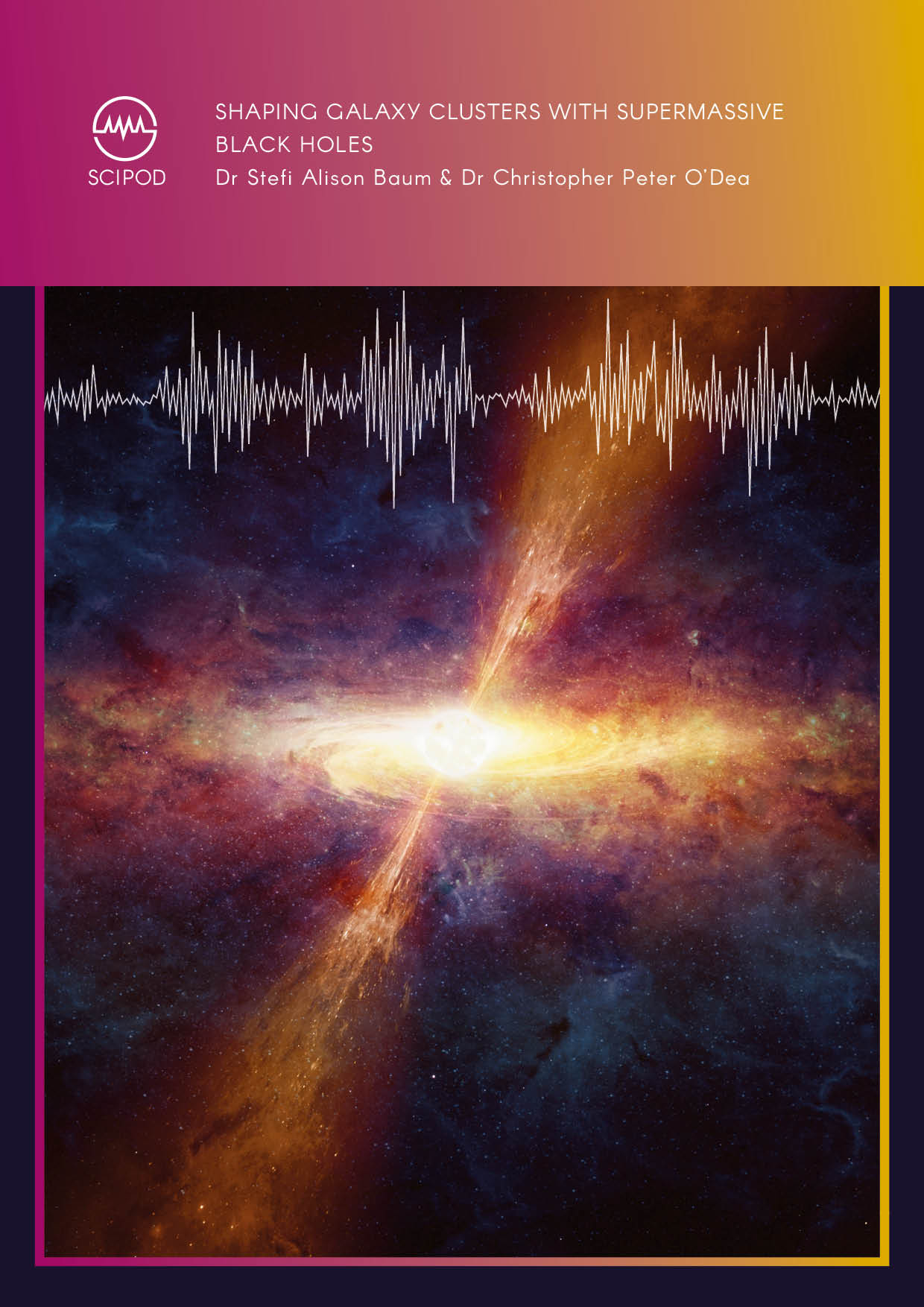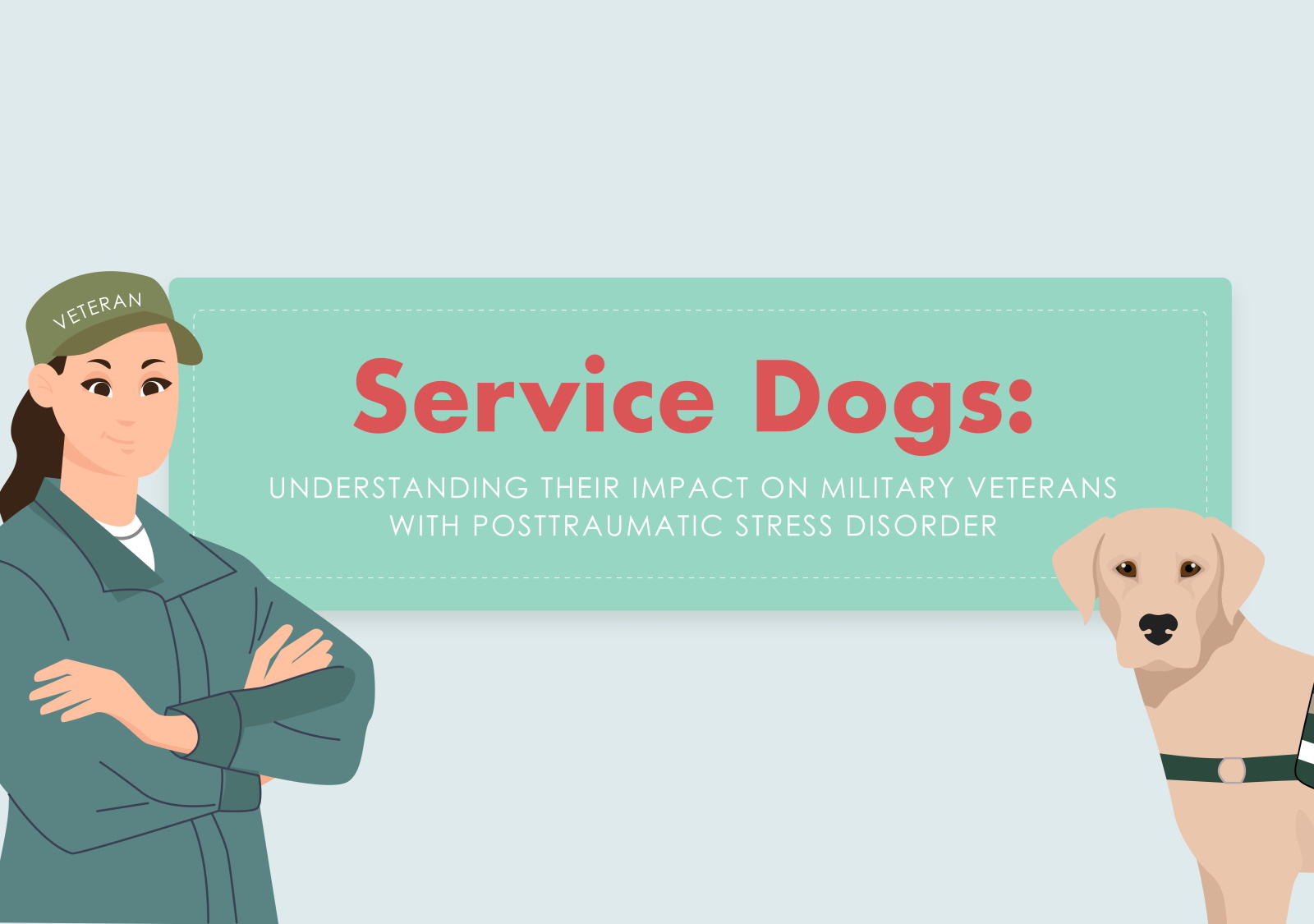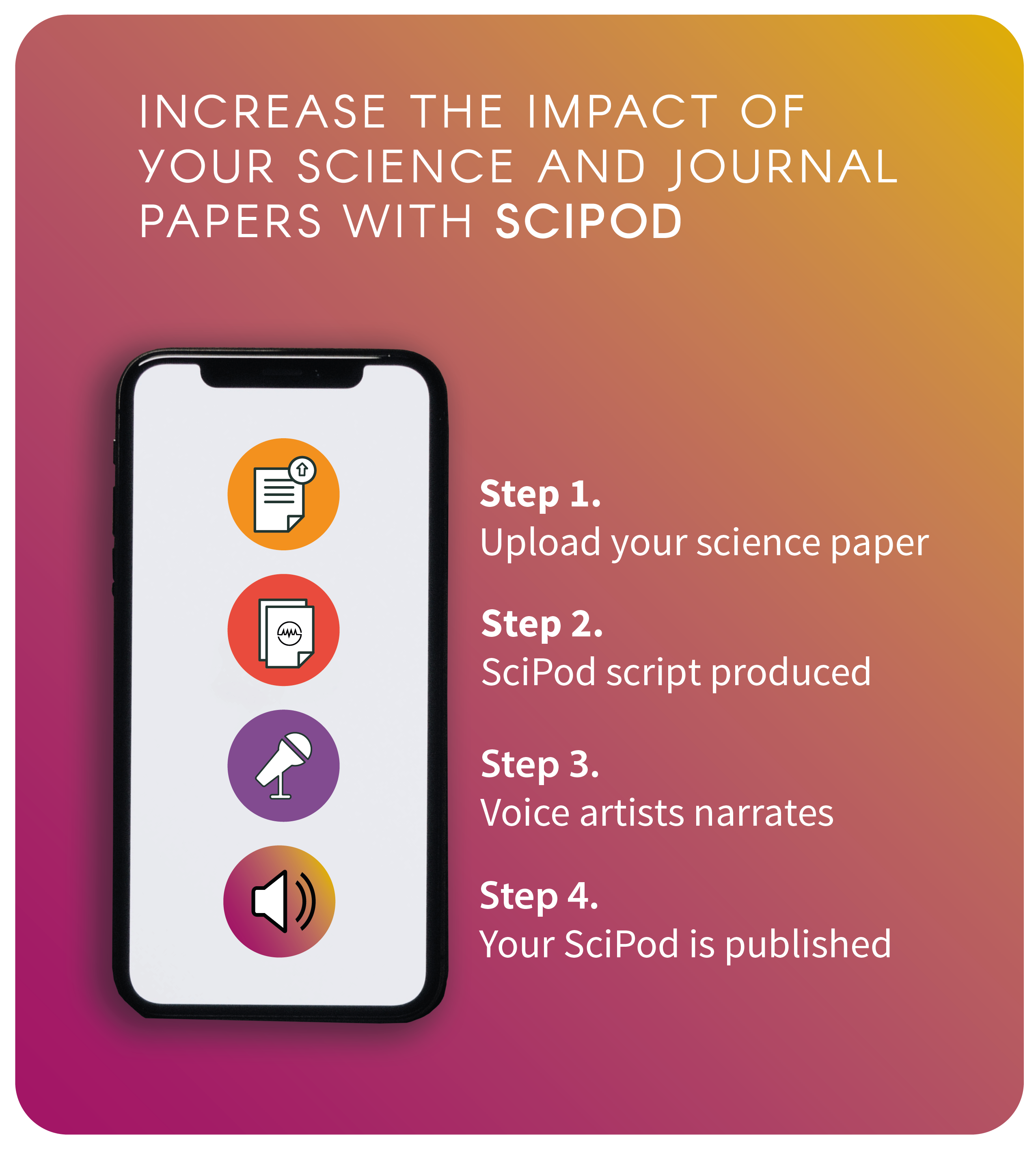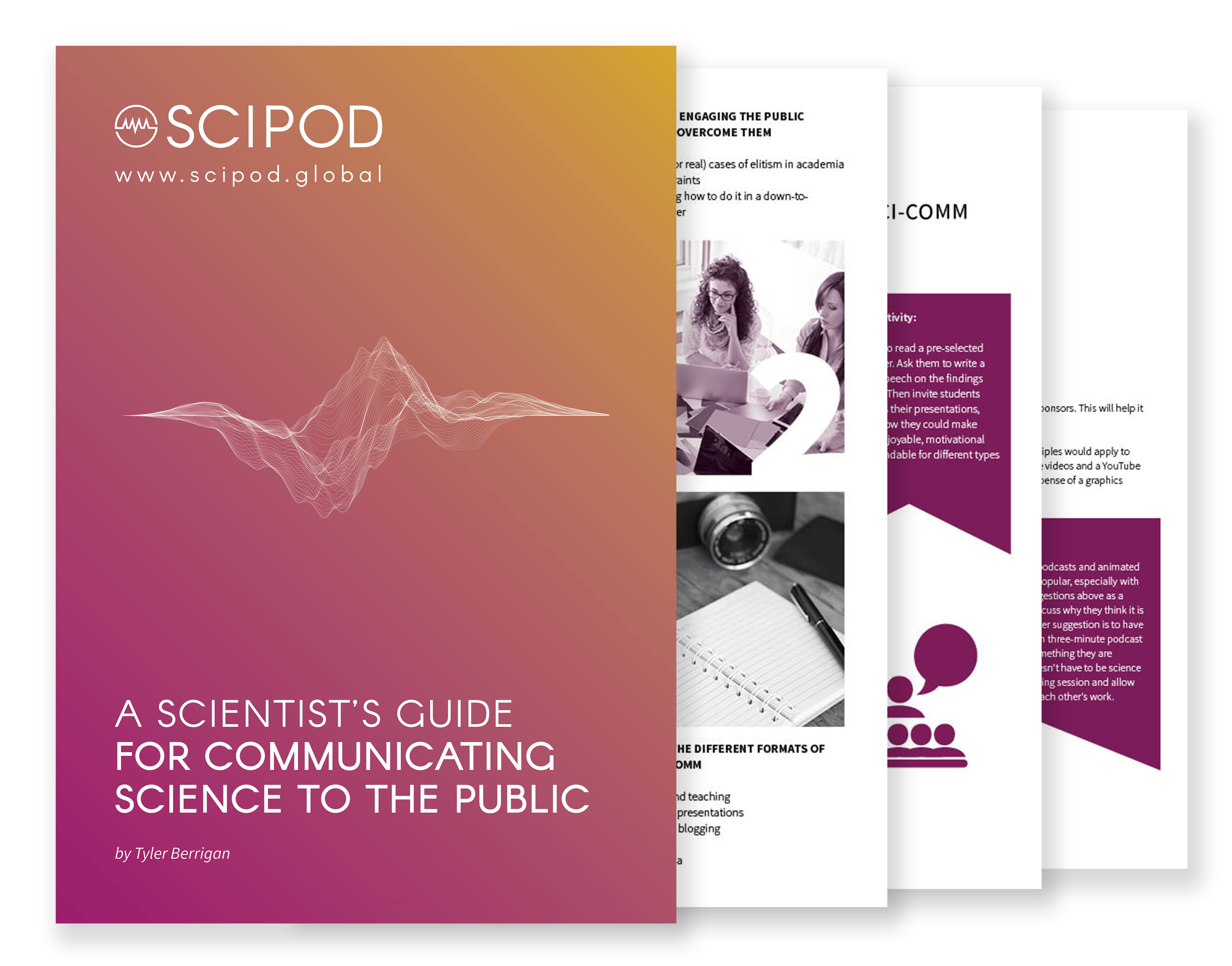Welcome to SciComm Radio
An exclusive interview series with leading scientists and science communicators
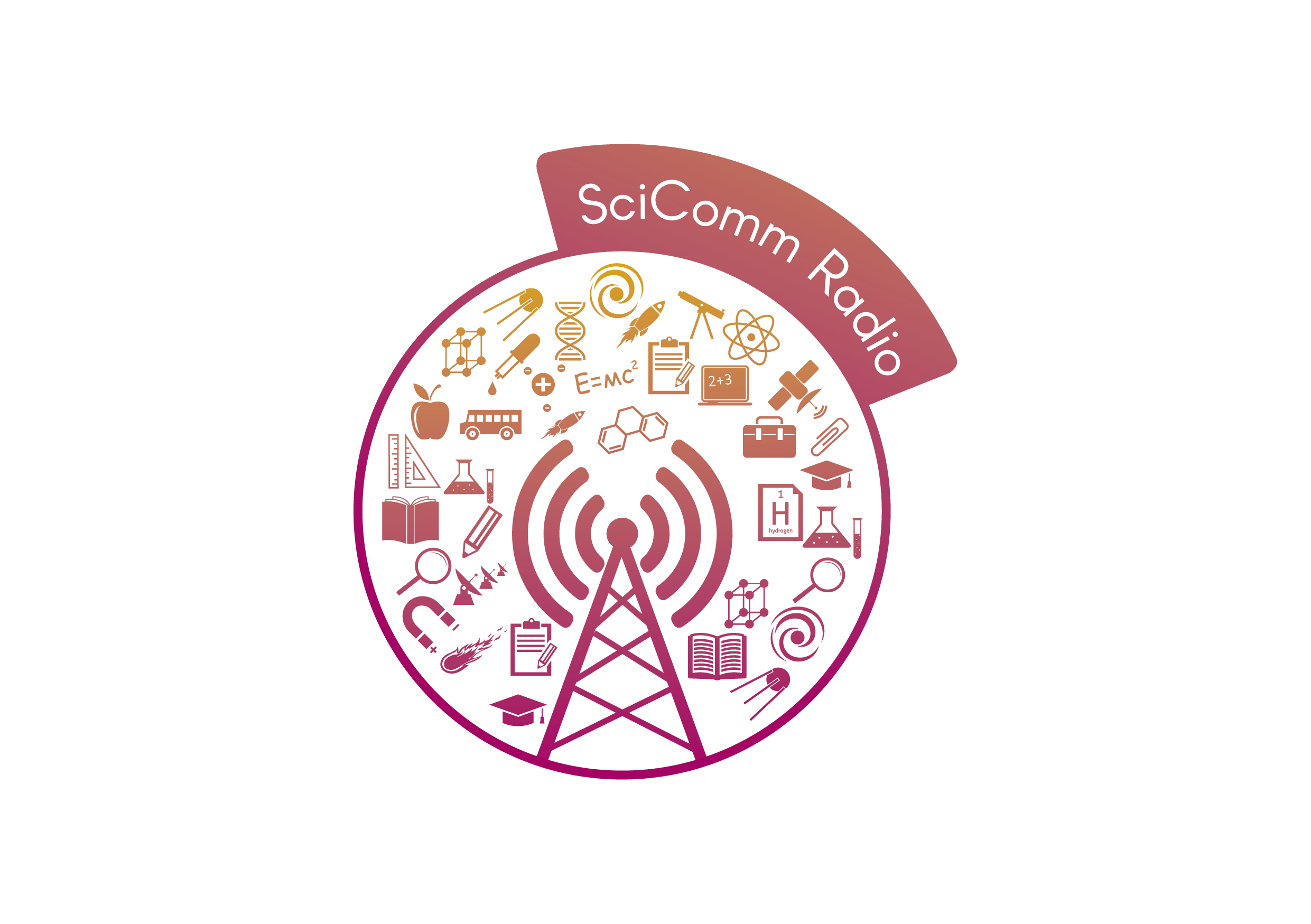
Click Below To Listen To A SciPod Radio Episode
Dr Kristiina A. Vogt | Dr Samantha De Abreu | Dr Maria Blancas – Indigenous Holistic Storytelling to Teach Environmental Science
AudioPod
About this episode
Original Article Reference
This SciPod is a summary of doi.org/10.33548/SCIENTIA870
This work is licensed under a Creative Commons Attribution 4.0 International License. 
What does this mean?
Share: You can copy and redistribute the material in any medium or format
Adapt: You can change, and build upon the material for any purpose, even commercially.
Credit: You must give appropriate credit, provide a link to the license, and indicate if changes were made.
Increase the impact of your research!
More episodes
Dr Talicia Pillay | Machine Learning Meets Marine Conservation
AudioPod
About this episode
Original Article Reference
This SciPod is a summary of the paper ‘Benthic habitat mapping from a machine learning perspective on the Cape St Francis inner shelf, Eastern Cape, South Africa’, in Marine Geology. doi.org/10.1016/j.margeo.2021.106595
For further information, you can connect with Dr Talicia Pillay at tpillay@geoscience.org.za
This work is licensed under a Creative Commons Attribution 4.0 International License. 
What does this mean?
Share: You can copy and redistribute the material in any medium or format
Adapt: You can change, and build upon the material for any purpose, even commercially.
Credit: You must give appropriate credit, provide a link to the license, and indicate if changes were made.
Increase the impact of your research!
More episodes
Dr Philip Norcott | Imaging the Small: Improving Nuclear Magnetic Resonance with SABRE-DREAM
AudioPod
About this episode
In a recent paper, Dr Philip Norcott at the Australian National University proposes a new strategy to improve nuclear magnetic resonance spectroscopy and imaging, a technique widely used in biology, chemistry, and medical imaging. A difficultly in these applications of nuclear magnetic resonance is low sensitivity and the potential for multiple signals to overlap, and existing techniques may only improve one of these factors without addressing the other. Dr Norcott suggests and tests a novel technique that offers the best of both worlds.
Original Article Reference
This SciPod is a summary of the paper ‘Selective NMR detection of individual reaction components hyperpolarised by reversible exchange with para-hydrogen’, in Physical Chemistry Chemical Physics. doi.org/10.1039/d2cp01657e
For further information, you can connect with Doctor Norcott at Philip.Norcott@anu.edu.au
This work is licensed under a Creative Commons Attribution 4.0 International License. 
What does this mean?
Share: You can copy and redistribute the material in any medium or format
Adapt: You can change, and build upon the material for any purpose, even commercially.
Credit: You must give appropriate credit, provide a link to the license, and indicate if changes were made.
Increase the impact of your research!
More episodes
Dr Ilario Losito | Maximising the Healthy Compounds in Olive Oils
VideoPod
About this episode
Secoiridoids are a family of healthy compounds found in olive oil. The type, ratio, and amount of the four major secoiridoids in olive oil depends on several factors. These include the olive variety, the region in which it was produced, and the process used to extract the oil. Understanding how to optimise the secoiridoid content in olive oil is a key focus for many food scientists. Towards this aim, Dr Ilario Losito from the University of Bari Aldo Moro and his colleagues extensively analysed 60 different types of olive oils produced in Italy. They used specialist chemistry techniques to determine the secoiridoid content of these olive oils.
Original Article Reference
Summary of the paper ‘Bioactive Secoiridoids in Italian Extra-Virgin Olive Oils: Impact of Olive Plant Cultivars, Cultivation Regions and Processing’, in Molecules. doi.org/10.3390/molecules26030743
For further information, you can connect with Dr Ilario Losito at ilario.losito@uniba.it
Financial support for this video was provided by the SMART Interdepartment Research Center of the University of Bari Aldo Moro, Bari, Italy, and the ‘Progetto VIOLIN, funded by AGER – Fondazioni in Rete per la Ricerca Agroalimentare, Milan, Italy’.
This work is licensed under a Creative Commons Attribution 4.0 International License. 
What does this mean?
Share: You can copy and redistribute the material in any medium or format
Adapt: You can change, and build upon the material for any purpose, even commercially.
Credit: You must give appropriate credit, provide a link to the license, and indicate if changes were made.
Increase the impact of your research!
More episodes
Professor Avril Horne – Dr Andrew John | Re-evaluating How We Assess and Manage Rivers in Response to Climate Change
AudioPod
About this episode
Original Article Reference
This SciPod is a summary of the papers ‘Not Just Another Assessment Method: Reimagining Environmental Flows Assessments in the Face of Uncertainty’, doi.org/10.3389/fenvs.2022.808943, and ‘Robust Climate Change Adaptation for Environmental Flows in the Goulburn River, Australia’, doi.org/10.3389/fenvs.2021.789206.
This work is licensed under a Creative Commons Attribution 4.0 International License. 
What does this mean?
Share: You can copy and redistribute the material in any medium or format
Adapt: You can change, and build upon the material for any purpose, even commercially.
Credit: You must give appropriate credit, provide a link to the license, and indicate if changes were made.
Increase the impact of your research!
More episodes
Professor Kieran Kilcawley | Using Flavour Chemistry to Identify Biomarkers Behind the Sensory Perception of Irish Grass-fed Beef and Lamb
VideoPod
About this episode
For many consumers, the origin of the food they buy is of great importance. For instance, Irish beef and lamb is often seen as superior quality meat, as the animals are typically reared outdoors on a diet of predominately fresh grass. However, are Irish beef and lamb actually any different to meats produced elsewhere, from animals reared indoors in less sustainable production systems? Professor Kieran Kilcawley and his team at the Teagasc Agriculture and Food Development Authority in Ireland, in conjunction with University College Dublin, are investigating the ‘flavour chemistry’ of beef and lamb. Their aim is to determine whether there are fundamental differences in the chemical properties of meat due to the animal’s diet and origin.
Original Article Reference
Summary of the project ‘Flavoromics of Grass-Fed Beef and Lamb’,
https://www.researchgate.net/project/Flavoromics-of-Grass-Fed-Beef-and-Lamb
This work is licensed under a Creative Commons Attribution 4.0 International License. 
What does this mean?
Share: You can copy and redistribute the material in any medium or format
Adapt: You can change, and build upon the material for any purpose, even commercially.
Credit: You must give appropriate credit, provide a link to the license, and indicate if changes were made.
Increase the impact of your research!
More episodes
Dr Markku Lehtonen | Understanding Trust, Mistrust, and Distrust in the Nuclear Sector
AudioPod
About this episode
Is more trust always better? It is widely known that trust and confidence are fundamental in high-risk industries, such as nuclear energy and radioactive waste management. While public trust is definitely essential for policymaking, the upsides of mistrust and distrust are often overlooked by practitioners and social science researchers. This was recently examined in a special issue of the Journal of Risk Research, where a series of articles highlighted the ways in which mistrust and distrust can play a constructive role in the nuclear sector.
Original Article Reference
This SciPod is a summary of the paper ‘Introduction to the special issue ‘Trust, mistrust, distrust, and trust-building in the nuclear sector: historical and comparative experience from Europe’, in Journal of Risk Research, 2022. https://doi.org/10.1080/13669877.2022.2067892
This work is licensed under a Creative Commons Attribution 4.0 International License. 
What does this mean?
Share: You can copy and redistribute the material in any medium or format
Adapt: You can change, and build upon the material for any purpose, even commercially.
Credit: You must give appropriate credit, provide a link to the license, and indicate if changes were made.
Increase the impact of your research!
More episodes
Dr Barrett Caldwell | A New Learner-Centred Design for Online Engineering Courses
AudioPod
About this episode
Original Article Reference
This SciPod is a summary of the papers ‘Learner-Centered Design of Online Courses: A Transdisciplinary Systems Engineering Case Design’ and ‘Eleven Years, Five Factors: Systems Engineering Education Since IERC 2009’ in Proceedings of the 2020 IISE Annual Conference, 2020.
This work is licensed under a Creative Commons Attribution 4.0 International License. 
What does this mean?
Share: You can copy and redistribute the material in any medium or format
Adapt: You can change, and build upon the material for any purpose, even commercially.
Credit: You must give appropriate credit, provide a link to the license, and indicate if changes were made.
Increase the impact of your research!
More episodes
Dr William Durkan | Exploring How the Geography of Voter Turnout Impacts Election Results
VideoPod
About this episode
Voter turnout plays a key role in the functioning of democracies. If only a minority of citizens vote, the elected government might not accurately represent the views of the population. In contrast, when voter turnout is high, a country’s government has a strong mandate to make decisions on its citizens’ behalf. The geographical distributions of voters and voter turnout also significantly affect the outcome of elections. Dr William Durkan of Maynooth University in Ireland recently explored the changing geographies of voter turnout in US presidential elections from 2012 to 2020, using the state of Michigan as a case study.
Original Article Reference
Summary of the paper ‘Changing geographies of voter turnout: Michigan and the urban/rural divide’ in Political Geography.
doi.org/10.1016/j.polgeo.2021.102449
For more information, you can visit Dr Durkan’s ResearchGate profile or connect with him on Twitter: @WilliamDurkan
This work is licensed under a Creative Commons Attribution 4.0 International License. 
What does this mean?
Share: You can copy and redistribute the material in any medium or format
Adapt: You can change, and build upon the material for any purpose, even commercially.
Credit: You must give appropriate credit, provide a link to the license, and indicate if changes were made.
Increase the impact of your research!
More episodes
Dr David Gilkey | Assessing and Improving Workplace Safety in Metal Mining
AudioPod
About this episode
Mining is a particularly hazardous industry, with miners often experiencing health problems, injuries and psychological issues. Dr David Gilkey, an Associate Professor of Safety, Health & Industrial Hygiene at Montana Technological University, has recently carried out a case study specifically investigating workplace safety climate in a metal mine in Montana. The study also assessed the effectiveness of a short training program to improve the metal mining company’s workplace safety leadership.
Original Article Reference
This SciPod is a summary of the paper ‘Safety Climate in MT Mining: A Case Study’, in ‘Mining, Metallurgy & Exploration, 2021. doi.org/10.1007/s42461-021-00472-1
This work is licensed under a Creative Commons Attribution 4.0 International License. 
What does this mean?
Share: You can copy and redistribute the material in any medium or format
Adapt: You can change, and build upon the material for any purpose, even commercially.
Credit: You must give appropriate credit, provide a link to the license, and indicate if changes were made.
Increase the impact of your research!
More episodes
Sara Stančin – Sašo Tomažič | Improving 3D Orientation Tracking in Gyroscope Sensors
VideoPod
About this episode
Gyroscopes are widely used to measure the orientations and rotation speeds of moving objects – but according to one pair of researchers, the techniques we currently use to measure them are introducing significant and easily avoidable errors. Through their research, Dr Sara Stančin and Dr Sašo Tomažič, both at the University of Ljubljana in Slovenia, introduce a mathematical framework which accounts for how all three rotations measured by a gyroscope happen simultaneously, rather than in a sequence.
Original Article Reference
Summary of the paper ‘On the Interpretation of 3D Gyroscope Measurements’, in Journal of Sensors. doi.org/10.1155/2018/9684326
This work is licensed under a Creative Commons Attribution 4.0 International License. 
What does this mean?
Share: You can copy and redistribute the material in any medium or format
Adapt: You can change, and build upon the material for any purpose, even commercially.
Credit: You must give appropriate credit, provide a link to the license, and indicate if changes were made.
Increase the impact of your research!
More episodes
Fritjof Basan | Exploring How Underwater Noise Dropped During the COVID-19 Pandemic
VideoPod
About this episode
Human activity slowed in 2020 due to the COVID-19 pandemic. Environmental researchers have taken this opportunity to investigate how ecosystems respond to a decrease in human-related stressors. One human-related stressor is shipping, which can impact ocean ecosystems by creating intense underwater sounds. Fritjof Basan and his colleagues at the Federal Maritime and Hydrographic Agency of Germany set out to determine whether reduced shipping activity in 2020 significantly affected the underwater soundscape.
Original Article Reference
Summary of the paper ‘Soundscapes in the German Baltic Sea Before and During the Covid-19 Pandemic’ in Frontiers in Marine Science. doi.org/10.3389/fmars.2021.689860
This work is licensed under a Creative Commons Attribution 4.0 International License. 
What does this mean?
Share: You can copy and redistribute the material in any medium or format
Adapt: You can change, and build upon the material for any purpose, even commercially.
Credit: You must give appropriate credit, provide a link to the license, and indicate if changes were made.
Increase the impact of your research!
More episodes
Dr Ana Elisa Rato – Dr Adélia Sousa | Harnessing Satellite Technology to Improve the Sustainability of Walnut Orchards
VideoPod
About this episode
Walnuts are one of the most nutritionally dense foods on the planet, and could play a large role in achieving global food security. However, in non-organic walnut orchards, chemical fertilisers are typically applied to boost nut yields. When excessive amounts of these chemicals are applied, they can leach into the surrounding environment, damaging local ecosystems. To ensure that correct amounts of fertilisers are applied to walnut orchards, leaf samples are often analysed beforehand, but analysing enough leaf samples is time consuming and expensive. Now, Dr Ana Elisa Rato, Dr Adélia Sousa and their colleagues at MED Institute in the University of Évora have developed an inexpensive approach to assess nutrient levels in walnut orchards, by harnessing the power of satellite technology.
Original Article Reference
Summary of the paper ‘The use of Sentinel 2 to quantify N, Ca, and K in walnuts orchards’, forthcoming. For further information, you can connect with Dr Ana Elisa Rato at aerato@uevora.pt
This work is licensed under a Creative Commons Attribution 4.0 International License. 
What does this mean?
Share: You can copy and redistribute the material in any medium or format
Adapt: You can change, and build upon the material for any purpose, even commercially.
Credit: You must give appropriate credit, provide a link to the license, and indicate if changes were made.
Increase the impact of your research!
More episodes
Engineering With a Mission – Santa Clara University
VideoPod
About this episode
Santa Clara University’s mission is to educate the whole person, instilling competence, compassion, and conscience. Through this approach, students are empowered to excel at their studies, and to use their knowledge and skills to create a more just, humane, and sustainable world.
Original Article Reference
This video includes a summary of the paper ‘Evaluation of Dihedral Angle Twin Boundaries in Cu10 wt%Zn Alloy Using Atomic Force Microscopy,’ in Microscopy and Microanalysis.
https://doi.org/10.1017/S1431927621011995
This work is licensed under a Creative Commons Attribution 4.0 International License. 
What does this mean?
Share: You can copy and redistribute the material in any medium or format
Adapt: You can change, and build upon the material for any purpose, even commercially.
Credit: You must give appropriate credit, provide a link to the license, and indicate if changes were made.
Increase the impact of your research!
More episodes
Dr Attila Salamon | Dr John Kent – Double-Yolked Eggs: Egg-cellent or Egg-cident?
AudioPod
About this episode
Eggs are marvellous – they contain all the sustenance needed to make a young bird within their protective shell, and when destined for the plate, they are nutritious and delicious. For many of us, cracking open an egg for breakfast to discover two yolks in the pan is a pleasant surprise. However, if eggs are nature’s miracle of packaging, then double-yolked eggs must be nature’s mistake – a mistake that still holds many mysteries. To answer some persisting questions, Dr Attila Salamon and Dr John Kent of University College Dublin examined our collective knowledge on double-yolked eggs in a recent review.
Original Article Reference
This SciPod is a summary of the paper ‘The double-yolked egg: from the ‘miracle of packaging’ to nature’s ‘mistake’’, in World’s Poultry Science Journal. doi.org/10.1080/00439339.2020.1729671
This work is licensed under a Creative Commons Attribution 4.0 International License. 
What does this mean?
Share: You can copy and redistribute the material in any medium or format
Adapt: You can change, and build upon the material for any purpose, even commercially.
Credit: You must give appropriate credit, provide a link to the license, and indicate if changes were made.
Increase the impact of your research!
More episodes
Professor Manoj Sharma | The Multi-theory Model (MTM) of Health Behavior Change: Understanding Meditation, or ‘Dhyana’
AudioPod
About this episode
Original Article Reference
This SciPod is a summary of the papers ‘Can the multi-theory model (MTM) of health behavior change explain the intent for people to practice meditation?’ in the Journal of Evidence-Based Integrative Medicine, doi.org/10.1177/2515690X211064582, and ‘Introspective meditation before seeking pleasurable activities as a stress reduction tool among college students: A multi-theory model-based pilot study’, published in Healthcare, doi.org/10.33390/healthcare10040614.
This work is licensed under a Creative Commons Attribution 4.0 International License. 
What does this mean?
Share: You can copy and redistribute the material in any medium or format
Adapt: You can change, and build upon the material for any purpose, even commercially.
Credit: You must give appropriate credit, provide a link to the license, and indicate if changes were made.
Increase the impact of your research!
More episodes
Professor John P Miller | The Importance of Compassion and Compromise in Healthy Societies
AudioPod
About this episode
Original Article Reference
This SciPod is a summary of the paper ‘Educating for compassion and mutual accommodation’, in International Journal of Educational Research. https://doi.org/10.1016/j.ijer.2021.101847
This work is licensed under a Creative Commons Attribution 4.0 International License. 
What does this mean?
Share: You can copy and redistribute the material in any medium or format
Adapt: You can change, and build upon the material for any purpose, even commercially.
Credit: You must give appropriate credit, provide a link to the license, and indicate if changes were made.
Increase the impact of your research!
More episodes
Dr Julia Gresky | A Missed Opportunity: Reports of Ancient Rare Diseases in the Paleopathological Literature
AudioPod
About this episode
Original Article Reference
This SciPod is a summary of the paper ‘How rare is rare? A literature survey of the last 45 years of paleopathological research on ancient rare diseases’, published in the International Journal of Paleopathology. DOI: https://doi.org/10.1016/j.ijpp.2021.03.003
This work is licensed under a Creative Commons Attribution 4.0 International License. 
What does this mean?
Share: You can copy and redistribute the material in any medium or format
Adapt: You can change, and build upon the material for any purpose, even commercially.
Credit: You must give appropriate credit, provide a link to the license, and indicate if changes were made.
Increase the impact of your research!
More episodes
Dr Kahiu Ngugi | Developing Drought and Weed Resistant Super-Sorghum
AudioPod
About this episode
Original Article Reference
This SciPod is a summary of the papers ‘Novel sources of drought tolerance from landraces and wild sorghum relatives’, in Crop Science, doi.org/10.1002/csc2.20300, and ‘Genotypic Variation in Cultivated and Wild Sorghum Genotypes in Response to Striga hermonthica Infestation’, in Frontiers in Plant Science, doi.org/10.3389/fpls.2021.671984.
This work is licensed under a Creative Commons Attribution 4.0 International License. 
What does this mean?
Share: You can copy and redistribute the material in any medium or format
Adapt: You can change, and build upon the material for any purpose, even commercially.
Credit: You must give appropriate credit, provide a link to the license, and indicate if changes were made.
Increase the impact of your research!
More episodes
Dr Carlos Rodriguez-Franco | Dr Deborah Page-Dumroese – Healing Abandoned Mine Ecosystems with Biochar
AudioPod
About this episode
Original Article Reference
This SciPod is a summary of the paper ‘Woody biochar potential for abandoned mine land restoration in the U.S.: a review’, in Biochar. doi.org/10.1007/s42773-020-00074-y
This work is licensed under a Creative Commons Attribution 4.0 International License. 
What does this mean?
Share: You can copy and redistribute the material in any medium or format
Adapt: You can change, and build upon the material for any purpose, even commercially.
Credit: You must give appropriate credit, provide a link to the license, and indicate if changes were made.
Increase the impact of your research!
More episodes
Professor Lynne McCormack | Nicole L. Bennett – Gender Minimisation and Gender-based Abuse Experienced by Military Women
AudioPod
About this episode
Original Article Reference
This SciPod is a summary of the paper ‘Relentless, Aggressive, and Pervasive: Exploring Gender Minimization and Sexual Abuse Experienced by Women Ex-Military Veterans’, Psychological Trauma: Theory, Research, Practice, and Policy, 2021. https://doi.org/10.1037/tra0001157
This work is licensed under a Creative Commons Attribution 4.0 International License. 
What does this mean?
Share: You can copy and redistribute the material in any medium or format
Adapt: You can change, and build upon the material for any purpose, even commercially.
Credit: You must give appropriate credit, provide a link to the license, and indicate if changes were made.
Increase the impact of your research!
More episodes
Dr Alan Litchfield | Jeff Herbert – ReSOLV: Preventing Software Piracy with Cryptocurrency Blockchain Technology
VideoPod
About this episode
Software piracy is a large and growing problem. The methods used to combat it are becoming increasingly complex as technology evolves, costing software publishers and users billions of dollars each year. Dr Alan Litchfield from the Auckland University of Technology and Jeff Herbert from Cybercraft, New Zealand, have developed a new method to suppress software piracy called ReSOLV. In this video, learn more about their innovative software validation method, which is based on cryptocurrency blockchain technology.
Original Article Reference
Summary of the paper ‘Comprehensive Surface Characterization of Cellulose‑Based Tissues Using Sorption Techniques’, in Materials Circular Economy. https://doi.org/10.1007/s42824-021-00034-2
This work is licensed under a Creative Commons Attribution 4.0 International License. 
What does this mean?
Share: You can copy and redistribute the material in any medium or format
Adapt: You can change, and build upon the material for any purpose, even commercially.
Credit: You must give appropriate credit, provide a link to the license, and indicate if changes were made.
Increase the impact of your research!
More episodes
Dr Anett Kondor | Using Advanced Techniques to Test the Performance of Recycyled Bathroom Tissue
VideoPod
About this episode
As we attempt to reduce our environmental impact, many fields have changed. This includes bathroom tissue manufacturers, who are under increasing pressure to employ recycled paper as a sustainable raw material. Motivated by this shift, Dr Anett Kondor and her research team at Surface Measurement Systems Ltd studied four types of bathroom tissue, both recycled and non-recycled, to compare their water-adsorption performance.
Original Article Reference
Summary of the paper ‘Comprehensive Surface Characterization of Cellulose‑Based Tissues Using Sorption Techniques’, in Materials Circular Economy. https://doi.org/10.1007/s42824-021-00034-2
This work is licensed under a Creative Commons Attribution 4.0 International License. 
What does this mean?
Share: You can copy and redistribute the material in any medium or format
Adapt: You can change, and build upon the material for any purpose, even commercially.
Credit: You must give appropriate credit, provide a link to the license, and indicate if changes were made.
Increase the impact of your research!
More episodes
Dr Joji Muramoto | Healthy Soils, Healthy Planet, Healthy Humans!
AudioPod
About this episode
Original Article Reference
This SciPod is a summary of the paper ‘Integrated Soil Health Management for Plant Health and One Health: Lessons From Histories of Soil-borne Disease Management in California Strawberries and Arthropod Pest Management’, in Frontiers in Sustainable Food Systems. doi.org/10.3389/fsufs.2022.839648
This work is licensed under a Creative Commons Attribution 4.0 International License. 
What does this mean?
Share: You can copy and redistribute the material in any medium or format
Adapt: You can change, and build upon the material for any purpose, even commercially.
Credit: You must give appropriate credit, provide a link to the license, and indicate if changes were made.
Increase the impact of your research!
More episodes
Simone Henriksen | Regulating the Quality of Treatment for Substance-related Disorders
AudioPod
About this episode
Original Article Reference
This SciPod is a summary of the paper ‘The National Quality Framework: The Benchmark for the Alcohol and other Drug Sector in Australia’, published in Medical Law Review. DOI: https://doi.org/10.1093/medlaw/fwab050
This work is licensed under a Creative Commons Attribution 4.0 International License. 
What does this mean?
Share: You can copy and redistribute the material in any medium or format
Adapt: You can change, and build upon the material for any purpose, even commercially.
Credit: You must give appropriate credit, provide a link to the license, and indicate if changes were made.
Increase the impact of your research!
More episodes
Professor Barrett S. Caldwell | Developing Effective Chronic Care Systems for Traumatic Brain Injury
AudioPod
About this episode
An estimated 69 million people worldwide are currently living with traumatic brain injury (TBI). TBI can lead to short- and long-term conditions including sleep disorders, depression, headaches and an increased risk of suicide. TBI has recently been recognised as a chronic condition, although the human factors involved in recovery remain understudied. Working to address this is Professor Barrett S. Caldwell who leads the GROUPER Laboratory at Purdue University, USA.
Original Article Reference
This SciPod is a summary of the following papers:
‘Considerations for developing chronic care system for traumatic brain injury based on comparisons of cancer survivorship and diabetes management care’, published in Ergonomics, DOI: https://doi.org/10.1080/00140139.2017.1349932
‘Evaluating and designing procedures in safety critical environments: a framework and taxonomy based on a critical review and synthesis’, published in Theoretical Issues in Ergonomics Science, DOI: https://doi.org/10.1080/1463922X.2018.1529205
and
‘Multi-level, multi-discipline, and temporally-diverse handoffs in traumatic brain injury rehabilitation’, published in Proceedings of the International Symposium on Human Factors and Ergonomics in Health Care, DOI: https://doi.org/10.1177%2F2327857918071042
This work is licensed under a Creative Commons Attribution 4.0 International License. 
What does this mean?
Share: You can copy and redistribute the material in any medium or format
Adapt: You can change, and build upon the material for any purpose, even commercially.
Credit: You must give appropriate credit, provide a link to the license, and indicate if changes were made.
Increase the impact of your research!
More episodes
Professor Nadezhda Sabeva – Professor Peter Ferchmin | Determining the Safety of the Tobacco Cembranoid 4R as a Neuroprotective Agent
AudioPod
About this episode
Increased use of organophosphate chemicals in industry, agriculture and warfare has led to a rising threat of exposure to these neurotoxins in civilian and military populations. Though their danger has been recognised and efforts made to decrease concentrations used, even at low doses these chemicals can still pose significant risks to exposed individuals. Finding effective treatments to counteract the impact of exposure is becoming increasingly important and is the focus of research by Professor Nadezhda Sabeva and Professor Peter Ferchmin at the Universidad Central del Caribe, Puerto Rico.
Original Article Reference
This SciPod is a summary of the paper ‘In Vivo Evaluation of the Acute Systemic Toxicity of (1S,2E,4R,6R,7E,11E)-Cembratriene-4,6-diol (4R) in Sprague Dawley Rats’, published in Nutraceuticals. DOI: https://doi.org/10.3390/nutraceuticals2020005
This work is licensed under a Creative Commons Attribution 4.0 International License. 
What does this mean?
Share: You can copy and redistribute the material in any medium or format
Adapt: You can change, and build upon the material for any purpose, even commercially.
Credit: You must give appropriate credit, provide a link to the license, and indicate if changes were made.
Increase the impact of your research!
More episodes
Dr Abera Habte et al. | Climate Change in Ethiopia: Exploring Farmers’ Attitudes and Adaptation Strategies
AudioPod
About this episode
Around the world, climate change is impacting the availability of food and water, affecting people’s health and livelihoods. Unfortunately, these damaging effects are more pronounced in developing countries. In a recent study, Dr Abera Habte of Wolaita Sodo University and his collaborators investigated the impacts of climate change in Southwestern Ethiopia. His team incorporated the perceptions and knowledge of local farmers into their analysis, in order to develop more effective climate adaptation strategies.
In collaboration with

Original Article Reference
This SciPod is a summary of the paper ‘Spatial Variability and Temporal Trends of Climate Change in Southwest Ethiopia: Association with Farmers’ Perception and Their Adaptation Strategies’, in Advances in Meteorology. doi.org/10.1155/2021/3863530
This work is licensed under a Creative Commons Attribution 4.0 International License. 
What does this mean?
Share: You can copy and redistribute the material in any medium or format
Adapt: You can change, and build upon the material for any purpose, even commercially.
Credit: You must give appropriate credit, provide a link to the license, and indicate if changes were made.
Increase the impact of your research!
More episodes
Dr Stefi Baum – Dr Christopher O’Dea | Shaping Galaxy Clusters with Supermassive Black Holes
AudioPod
About this episode
Original Article Reference
This SciPod is a summary of https://doi.org/10.33548/SCIENTIA859
This work is licensed under a Creative Commons Attribution 4.0 International License. 
What does this mean?
Share: You can copy and redistribute the material in any medium or format
Adapt: You can change, and build upon the material for any purpose, even commercially.
Credit: You must give appropriate credit, provide a link to the license, and indicate if changes were made.
Increase the impact of your research!
More episodes
Dr Maggie O’Haire | Dr Kerri Rodriguez – Service Dogs: Understanding Their Impact on Military Veterans with Posttraumatic Stress Disorder
VideoPod
About this episode
Posttraumatic stress disorder (PTSD) is a mental disorder that can develop after experiencing a traumatic event, such as being part of military combat. Dr Maggie O’Haire and Dr Kerri Rodriguez at Purdue University in the USA and their colleagues are working to better understand why and how PTSD service dogs may improve PTSD symptoms among military veterans.
This work is licensed under a Creative Commons Attribution 4.0 International License. 
What does this mean?
Share: You can copy and redistribute the material in any medium or format
Adapt: You can change, and build upon the material for any purpose, even commercially.
Credit: You must give appropriate credit, provide a link to the license, and indicate if changes were made.


